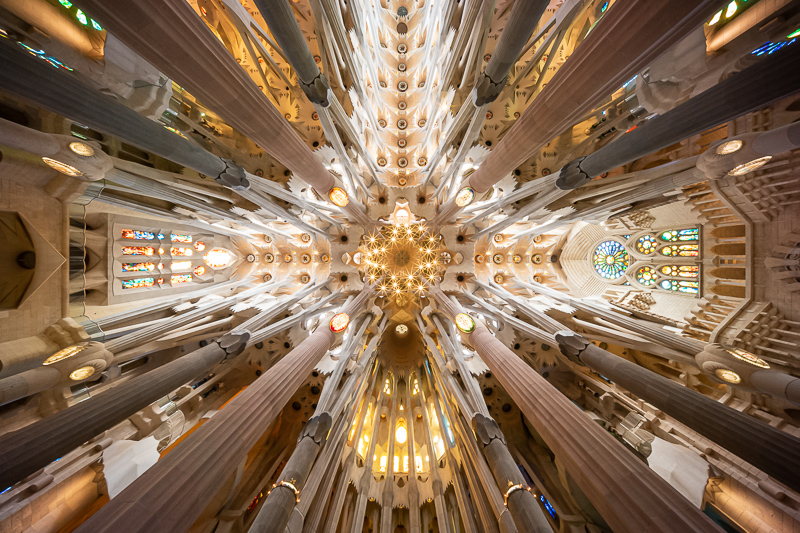
We summarize our experience with all the native E-mount and a few manual legacy lenses in the 9-18mm bracket to give you a compact and independent resource for choosing the right super- to ultra-wide-angle lens for your Sony A7 cameras. In this summary we also included some adapted lenses we think are worth mentioning.
We also have a general guide to FE lenses, guide to 20-28mm lenses as well as a guide to 35mm lenses, 50mm lenses and 85-200mm portrait lenses.
We have no association with any lens manufacturer apart from occasionally loaning a lens for a review. Before any short introduction we tell you how long we have used a lens and if we have borrowed it from a manufacturer. But in most cases we have bought the lenses new from retail stores or on the used market.
Many of these lenses are manual focus only (MF) whereas some of them feature auto focus (AF). There is also a noticeable amount of lenses listed here that do not feature electronic contacts to communicate with the camera (no Exif).
If we have left any question unanswered please leave a comment or contact us on social media and we will do our best to answer it.
Last update: March 2025, Laowa 10mm 2.8 AF, 15mm 5.0 Cookie and Sony 16-25mm 2.8G added, cleaned up
If you purchase the lens through one of thee affiliate-links in this article we get a small compensation with no additional cost to you.
Contents
- Laowa 9mm 5.6 FF-RL
- 7Artisans/Brightin Star 9mm 5.6
- Laowa 10mm 2.8 AF
- Samyang 10mm 3.5 XP
- Laowa 10-18mm 4.5-5.6 FE C-Dreamer
- Voigtlander 10mm 5.6 E
- Laowa 11mm 4.5
- Laowa 12mm 2.8
- Sony FE 12-24mm 2.8 GM
- Sony FE 12-24mm 4.0 G
- Laowa 12-24mm 5.6 FE
- Voigtlander 12mm 5.6 III E
- Sigma 14mm 1.4 Art DG DN
- Sony FE 14mm 1.8 GM
- Sigma 14mm 1.8 Art (former DSLR design)
- Samyang 14mm 2.8 AF
- Samyang 14mm 2.8 (former DSLR design)
- Sigma Art 14-24mm 2.8 DG DN
- Laowa 14mm 4.0
- Laowa 15mm 2.0
- NiSi 15mm 4.0
- 7Artisans 15mm 4.0
- Voigtlander 15mm 4.5 E
- Laowa 15mm 4.5 Zero-D Shift
- Laowa 15mm 5.0 “Cookie”
- Viltrox FE 16mm 1.8 AF
- Sony FE 16-25mm 2.8 G
- Sony FE 16-35mm 2.8 GM
- Sony FE 16-35mm 2.8 GM II
- Sigma C 16-28mm 2.8 DG DN
- Sony FE 16-35mm 4.0 ZA OSS
- Sony FE 16-35mm 4.0 PZ G
- Tamron 17-28mm 2.8 Di III RXD
- Sigma C 17mm 4.0 DG DN
- Canon TS-E 17mm 4.0 L
- Zeiss Batis 18mm 2.8
- Samyang FE 18mm 2.8 AF
- Funleader 18mm 8.0 Pro
- AstrHori 18mm 8.0 Shift
- Closing Remarks
- Other Articles
Laowa 9mm 5.6 FF-RL
Recommended (to those looking for the widest rectilinear lens)
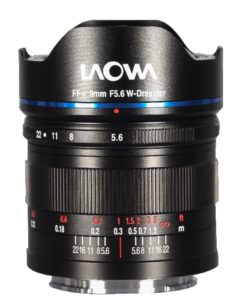
- super compact and the widest rectilinear lens available
- contrast and resolution are surprisingly good from wide open
- flare resistance slightly worse than the wide Voigtlander primes
- very nice sunstars thanks to 5 straight aperture blades
- complex distortion and high vignetting (profile for LR available)
Widest rectilinear lens available in a very compact package and with surprisingly good image quality, much better than the Voigtländer 10mm 5.6
373g | $599 | MF | no Exif | Review | Aperture series | Sample images
buy from manufacturer’s homepage | B&H | ebay.com | ebay.de (affiliate links)
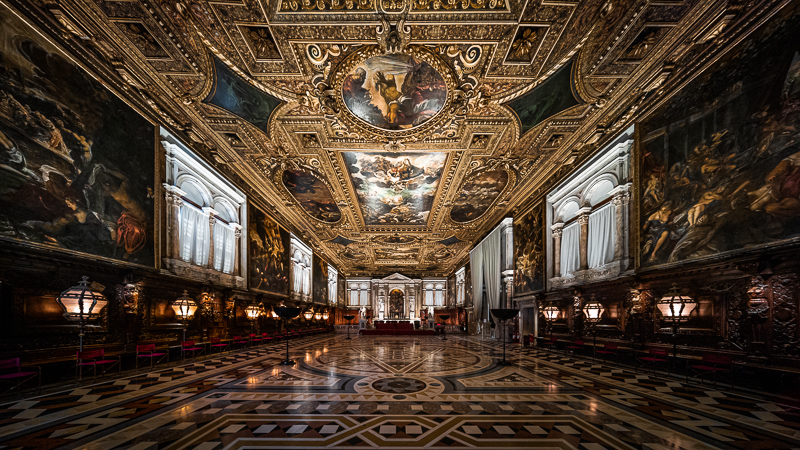
7Artisans/Brightin Star 9mm 5.6
Except for their casing design and the rear filter thread on the Brightin Star these lenses are identical.
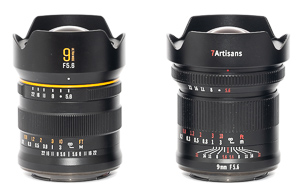
- not as wide as aforementioned Laowa 9mm 5.6
- contrast and resolution are surprisingly good from wide open, best performance at f/8.0
- flare resistance slightly better than Laowa 9mm 5.6 and slightly worse than the wide Voigtlander primes
- very nice sunstars thanks to 5 straight aperture blades
- high complex distortion and high vignetting
- Brightin Star version comes with a 34 mm ND1000 rear filter
On paper theses lenses should be as wide as the Laowa 9mm 5.6, but my comparisons showed the Laowa is a fair bit wider. Apart from that these are an interesting alternative to the Laowa with better flare resistance and slightly less vignetting but also higher distortion.
Update: apparently the 7Artisans version has also been updated with the filter thread
463/424g | $479 | MF | no Exif | Review 7Artisans | Review Brightin Star | Sample images 7Artisans | Sample Images Brightin Star
buy the 7Artisans version from the manufacturer’s homepage, B&H, ebay.com or amazon.com (affiliate links)
buy the Brightin Star version from the manufacturer’s homepage | ebay.com | amazon.com (affiliate links)
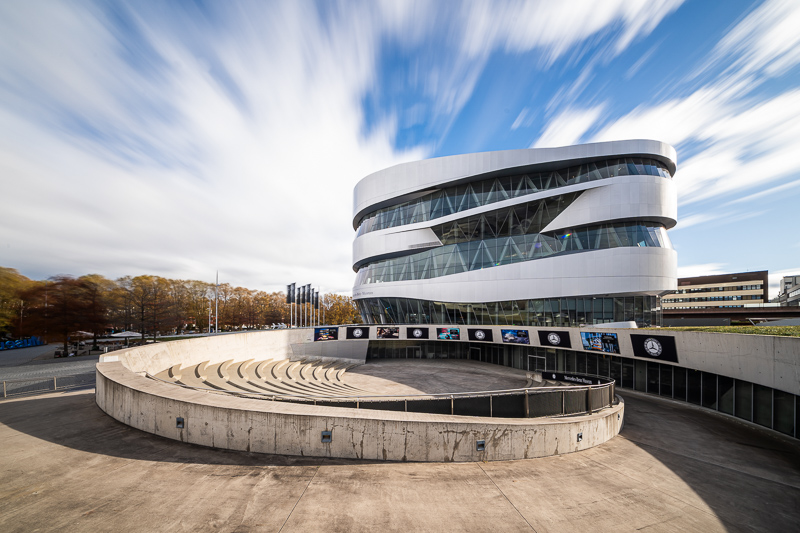
Laowa 10mm 2.8 AF
Recommended
- good sharpness and contrast from f/5.6
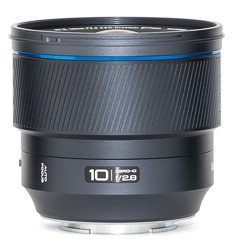
- high vignetting
- standard 77mm filter thread
- no color cast
- minimum focus distance
- interesting casing design
- comes in AF and MF (also no Exif!) versions
Laowa’s first AF lens. Versatile due to AF, normal filter thread, a fast f/2.8 maximum aperture and lack of color cast.
420g | $799 | AF | Exif | Review | Aperture series | Sample images
buy from manufacturer’s homepage, B&H, ebay.com (affiliate links)
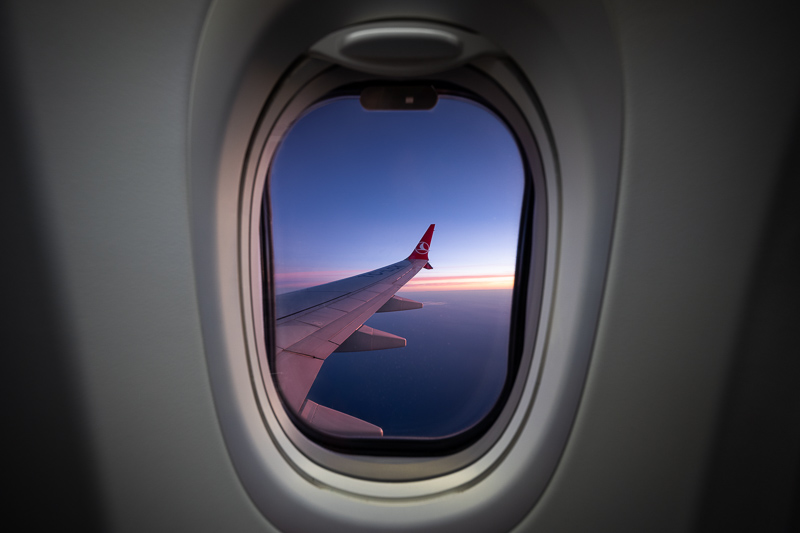
Samyang 10mm 3.5 XP
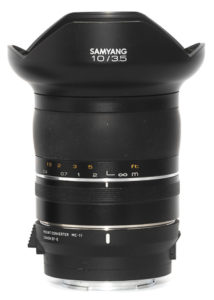
- contrast and resolution are good
- still high vignetting but noticeably lower compared to the ultrawide mirrorless lenses
- very strong green color cast in the corners
- flare resistance not particularly good
- uninspiring sunstars thanks to asymmetrical aperture diaphragm
- better suited to astro-photography than the Laowa 9mm 5.6 and Voigtländer 10mm 5.6 thanks to lower vignetting and faster maximum aperture
Only recommended over the Laowa 10mm 2.8 AF if you really need that lower vignetting.
730g + adapter | MF | Exif | $899 | Review | Aperture series | Sample images
buy from amazon.com | amazon.de | B&H | ebay.com | ebay.de (affiliate links)
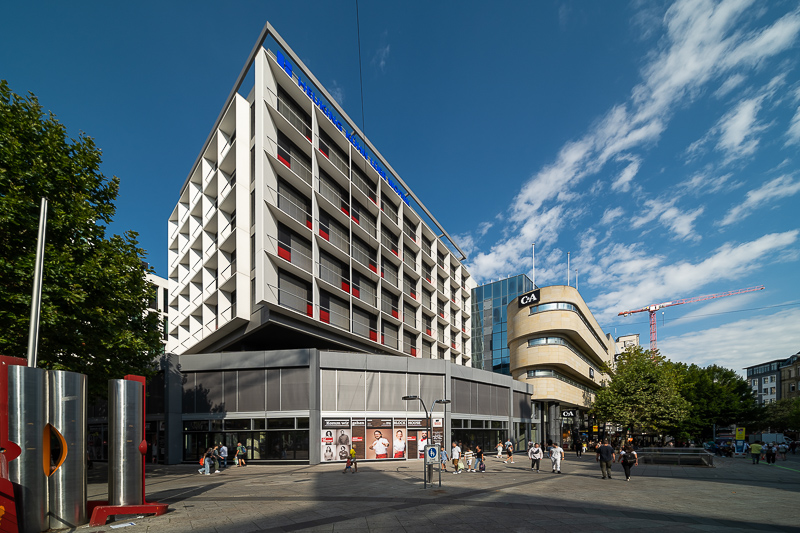
Laowa 10-18mm 4.5-5.6 FE C-Dreamer
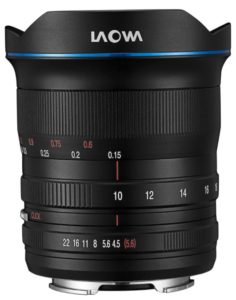
- super compact (similar in size to Zeiss Loxia 21mm 2.8) and even slightly wider than the 10mm Voigtlander
- contrast and resolution are never great, needs stopping down to f/8 to f/11 for okay corner sharpness
- flare resistance worse than the wide Voigtlander primes, very nice sunstars thanks to 5 straight aperture blades
- complex distortion and high vignetting, hard to correct because of missing electronic contacs
Widest rectilinear zoom lens available in a very compact package, but takes some work in post for good results therefore hard to recommend
499g | $599 | MF | no Exif | Review | Aperture series | Sample images
buy from manfucaturer’s homepage | B&H | amazon.com (affiliate links)
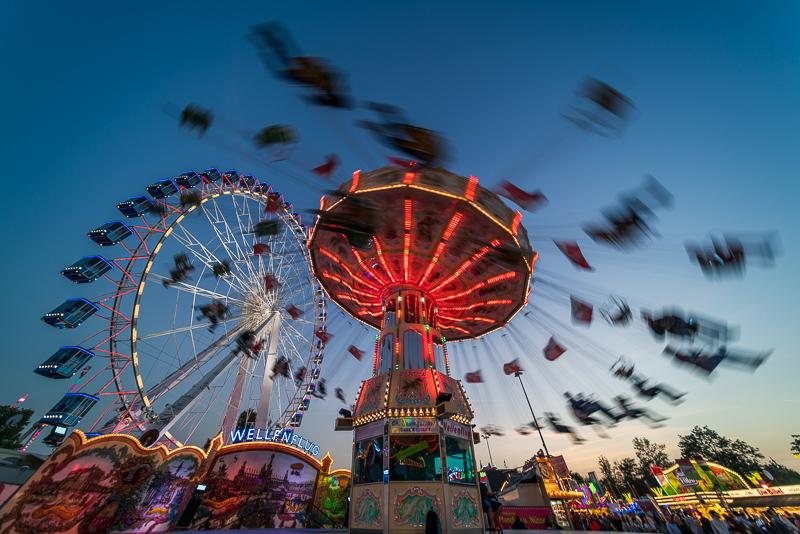
Voigtlander 10mm 5.6 E
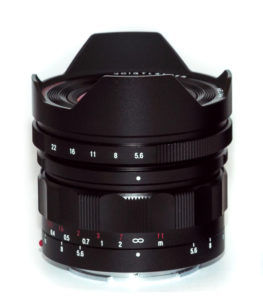
- At f/5.6 most of the frame is pretty sharp, corners and borders are somewhat soft though
- You have to use f/11 for best across frame sharpness, the corners never reach good values
- Almost no distortion, quite good flare resistance, beautiful 10-stroke sunstars
- Small and lightweight
Better have a look at Laowa 9mm 5.6 or Laowa 10mm 2.8 AF, both are much better performers and also cheaper
375g | $849 | MF | Exif | Review | Aperture series | Sample images
buy from ebay | buy from amazon.com | B&H (affiliate links)
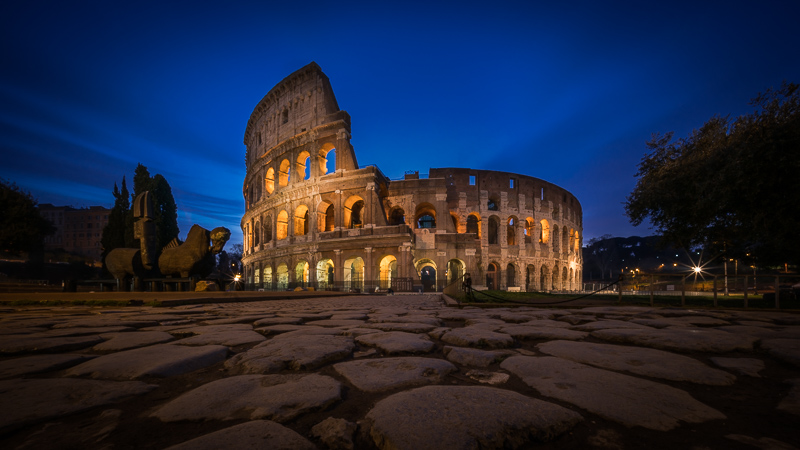
Laowa 11mm 4.5
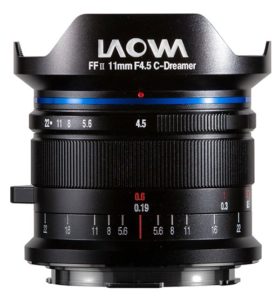
- Overall optical performance is similar to the Voigtlander 12mm 5.6 at shared apertures and slightly better than Voigtlander 10mm 5.6
- No electronic contacts, so no Exif data
- Nice, well defined sunstars
- Small and lightweight,
- Features a standard 62mm filter thread but the non removable hood spoils the filter holder party
Interesting and cheaper alternative to the 10mm 5.6 and discontinued 12mm 5.6 Voigtlander lenses, but optically not as good as the 9mm 5.6
254g | $549 | MF | no Exif | Review | Aperture series | Sample images
buy from manufacturer’s homepage | B&H | amazon.de | amazon.com | ebay.com (affiliate links)
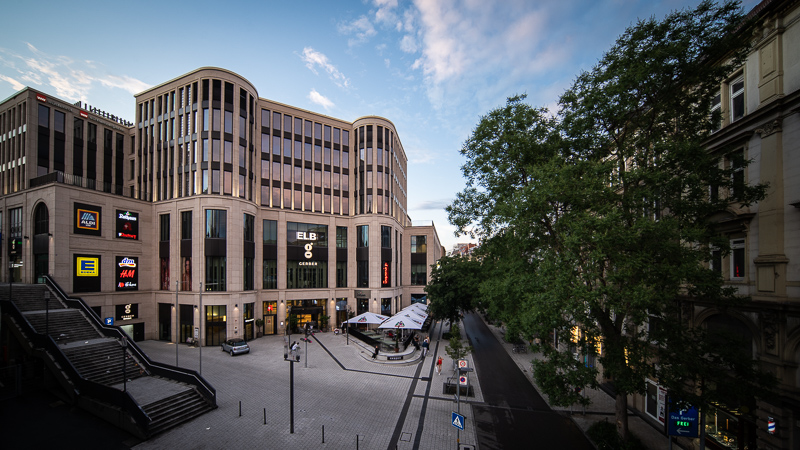
Laowa 12mm 2.8

- at f/2.8 center as well as midframe region is very sharp, corners suffer a bit from field curvature. Coma performance wide open not bad, a little worse than Samyang 14mm.
- from f/8.0 onwards very good across frame sharpness
- almost no distortion, ok flare resistance, ok vignetting.
- average size and weight, decently priced.
An UWA lens almost without real flaws. Can be combined with the Magic Shift Converter to create a 17mm 4.0 Shift lens
640g + adapter | $849 | MF | no Exif | Review | Aperture series | Sample images
buy from manufacturer | amazon.com | amazon.de | B&H (affiliate links)
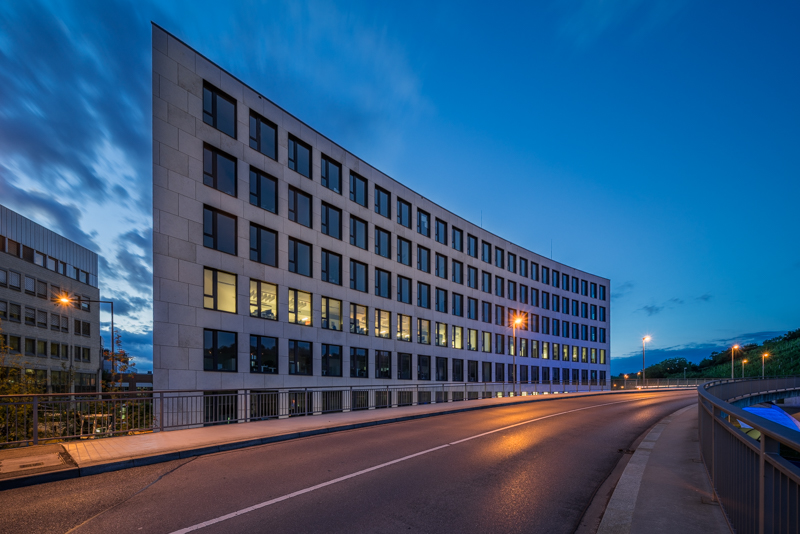
Sony FE 12-24mm 2.8 GM
Recommended

- Amazing contrast and resolution
- Flare resistance has been greatly improved over the Sony FE 12-24mm 4.0 G
- typical GM build quality and nice handling
- good CA correction
- nice 18-pointed sunstars
- 12mm, a maximum aperture of f/2.8 and good coma correction makes it a great choice for astrophotography
It seems to be hard to find a flaw with this lens, except for its price and that it needs 150mm square filters. You better be sure you really need the combination of 12mm and f/2.8 though, otherwise there are smarter options available.
847g | $2998 | AF | Exif | Review
buy from Amazon.com | Amazon.de | B&H | ebay (affiliate links)

Sony FE 12-24mm 4.0 G

- Excellent sharpness in the center from wide open at any focal length and very good across frame from f/5.6
- Strong distortion at the wide end which is still significant at the longer end.
- Vignetting at 12 mm is strong and doesn’t go away. At longer focal lengths vignetting is still significant.
- Flare can be an issue in demanding scenarios, the only real weakness of this lens.
- You can’t use normal filters with it.
- Average size with good build quality.
Sharpness is very good, so if you can live with the lack of a filter thread and accept worse flare resistance then it can be a very attractive lens, try to find a used sample though, new it is priced too high
565g | $1773 | AF | Exif | MTF | Photozone Review | compared to other lenses
buy from amazon.de | buy from amazon.com | B&H (affiliate links)
Laowa 12-24mm 5.6 FE

- better optical performance than Laowa 10-18mm 4.5-5.6, good contrast and resolution
- decent albeit not great flare resistance, very nice sunstars thanks to 5 straight aperture blades
- complex distortion at the wide end and high vignetting, hard to correct because of missing electronic contacts
- standard 77mm filter thread
A nice lens without any stand-out flaws, but a Sony FE 12-24mm 4.0G from the used market is a fierce competitor in the E-mount world
520g | $649 | MF | no Exif | Review | Sample images
buy from manufacturer’s homepage | amazon.com | amazon.de | ebay.com | ebay.de | B&H (affiliate links)
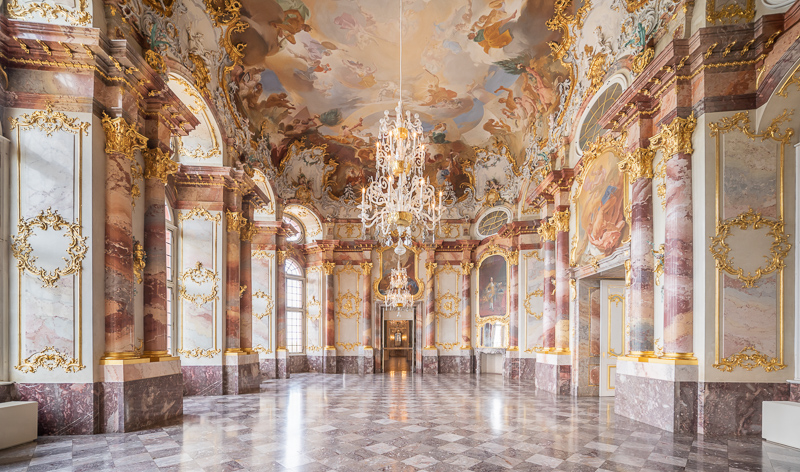
Voigtlander 12mm 5.6 III E

- At f/5.6 most of the frame is pretty sharp, only the extreme corners never get never as sharp as the center
- You have to use f/8.0 for best sharpness across most of the frame, the extreme corners still gain a little contrast at f/11
- Almost no distortion, quite good flare resistance, beautiful 10-stroke sunstars, heavy vignetting
- Small and lightweight, decently priced.
- No significant sample variation reported (In contrast to the 4.5/15)
- Much better performance on Sony E-Mount cameras than the M-Mount version II
Not as fast as the 15mm, not as wide as the 10mm and maybe therefore it has already been discontinued
283g | $899 | MF | Exif | Review | Aperture series | Sample images
buy from amazon.com | buy from ebay.com | buy from ebay.de (affiliate links)

Sigma 14mm 1.4 Art DG DN
Sigma specifically markets this as a lens for astrophotography. It is huge and heavy and even two years after its release there is no reliable review available as it is such a specialized tool.
1170g | $1599 | AF | Exif
buy from amazon.com | amazon.de | ebay.com | ebay.de | B&H (affiliate link) for $1370
Sony FE 14mm 1.8 GM
Recommended
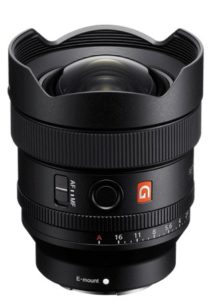
- Surprisingly compact considering its specifications
- Sharpness and contrast are very good over most of the frame
- Very good coma correction
- Surprisingly good flare resistance
- typical GM build quality and handling
- nice 18-pointed sunstars
- strong vignetting
- The lens does not feature a normal filter thread
- Sample variation can be an issue with this lens, better buy from trusted sellers with return option and check if it is decentered within the return period
Great choice for landscape astrophotography, especially to take pictures of the northern lights, but thanks to very good flare resistance not limited to that. If too expensive have a look at the Laowa 15mm 2.0 or Viltrox 16mm 1.8 AF.
458g | $1598 | AF | Exif | Review | Sample Images
buy from amazon.com | amazon.de | B&H | ebay (affiliate links)

Sigma 14mm 1.8 Art (former DSLR design)

- good contrast and sharpness
- lower vignetting than the competitors
- huge and heavy
- no filter thread
- coma correction not as good as the dimensions suggest
- Sample variation can be an issue with this lens, better buy from trusted sellers with return option and check if it is decentered within the return period
The aforementioned Sony lens offers least as good performance in a significantly smaller package for the same price. The Laowa 15mm 2.0 and the Viltrox 16mm 1.8 AF do not perform much worse for astro at less than half the weight and price. Really hard to recommend to E-mount users.
1220g | $1599 | AF | Exif | Lenstip Review
buy from Amazon.com | Amazon.de | B&H (affiliate links)
Samyang 14mm 2.8 AF

- compact ultra wideangle lens with AF
- good coma correction
- corners never look great
- high vignetting
- flare resistance could be better
- wavy distortion
- no filter thread
Considering the alternatives available these days somewhat hard to recommend, it is the cheapest option with AF in this focal length range though. In terms of optical performance it is interestingly worse than its cheaper manual focus predecessor – see next entry on this list.
505g | $499 | AF | Exif | Lenstip Review
buy from Amazon.com | Amazon.de | B&H | Ebay (affiliate links)
Samyang 14mm 2.8 (former DSLR design)

- Already at f/2.8 the sharpness across frame near infinity can be very good but mind a little field curvature. The contrast improves when stopping down to f/4.0. Coma correction wide open is also very good which makes this a great lens for astrophotography.
- Tremendous wavy distortion, I have yet to come across a profile which corrects this perfectly (PTLens won’t, all Lightroom profiles I tested – or created myself – won’t either). Huge vignetting wide open, rather bad flare resistance, 6 bladed aperture.
- Ok size and weight, decently priced.
- My biggest concern with this lens is the questionable build quality and the quality assurance problems. Out of 6 lenses I mounted on my camera 4 were badly decentered (of which 3 were new from different dealers). Focus scale is often totally misaligned. Front group is often a bit wobbly.
Good lens for landscape and especially astrophotography in case you find a good sample. If you buy a DSLR version of this lens and want to use it with an adapter make sure that adapter has the correct length, if it is too short this has the potential to greatly reduce this lens’ image quality.
570g (E-mount version) | $280 | MF | no Exif | Review | Sample images
buy from ebay | buy from amazon | B&H (affiliate links)
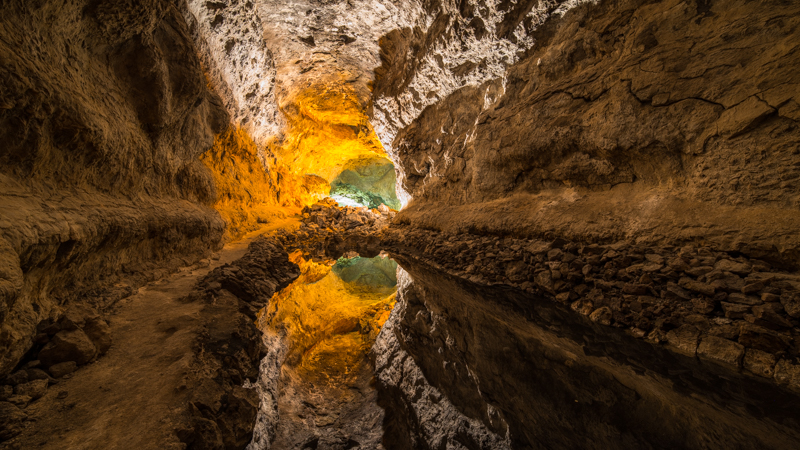
Sigma Art 14-24mm 2.8 DG DN
Recommended

- Already at f/2.8 the sharpness across frame is very good at all focal lengths
- Very low coma at 14mm, still low coma at 24mm
- High vignetting at 14mm and f/2.8 (~ 2.8 EV), still comparable to most of the competition
- Very good flare resistance for an ultra wide angle zoom with bulbous front element
- no filter thread
If the GM 12-24mm 2.8 is too expensive or you simply don’t need the 12mm angle of view this is a really great alternative and you won’t feel like giving anything up in terms of optical qualities
795g | $1299 | AF | Exif | Lenstip Review
buy from amazon.com | amazon.de | B&H | ebay.com (affiliate links)
Laowa 14mm 4.0
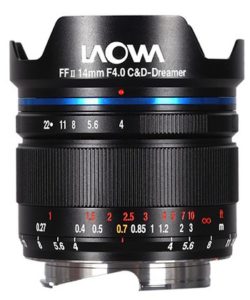
- Very compact and reasonably priced ultra wide angle lens
- Decent sharpness but some issues with flare resistance
- High vignetting at all apertures
- Nice, well defined sunstars
- No electronic contacts, so no Exif data
- Features a standard 52mm filter thread but the non removable hood spoils the filter holder party
We had some issues with sample variation, a good copy may perform better than the one we reviewed
228g | $449 | MF | no Exif | Review
buy from manufacturer’s homepage | B&H | eBay.com (affiliate links)
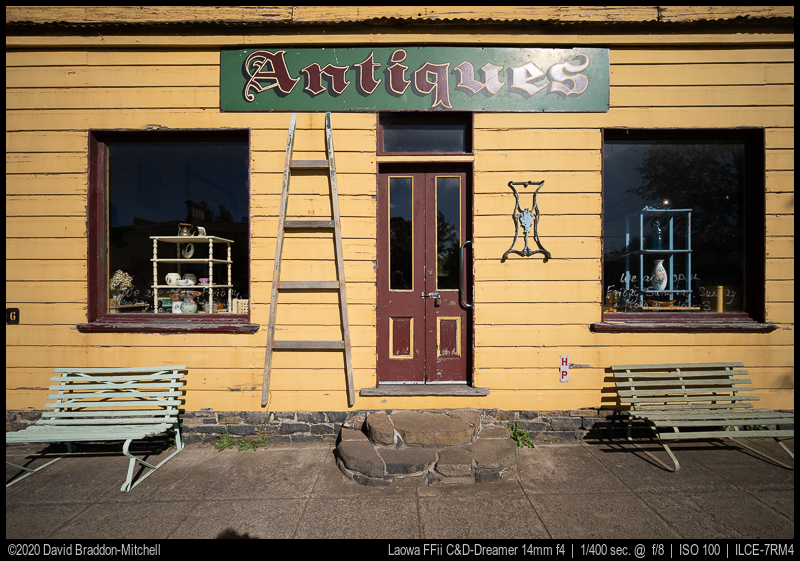
Laowa 15mm 2.0

- Already sharp across frame at f/2.0 without relevant field curvature.
- From f/4 onwards really great across frame sharpness on the A7rII.
- Almost no distortion, ok to good flare resistance, ok vignetting and coma correction, great minimum focus distance
- Rather small for what it is, the all metal construction adds some weight, decently priced.
Great allround UWA lens for astrophotography, architecture and dramatic close up shots, cheapter alternative to the Sony FE 14mm 1.8 GM
520g | $649 | MF | no Exif | Review | Aperture series | Sample images
buy from manufacturer | amazon.com | B&H | amazon.de (affiliate links)
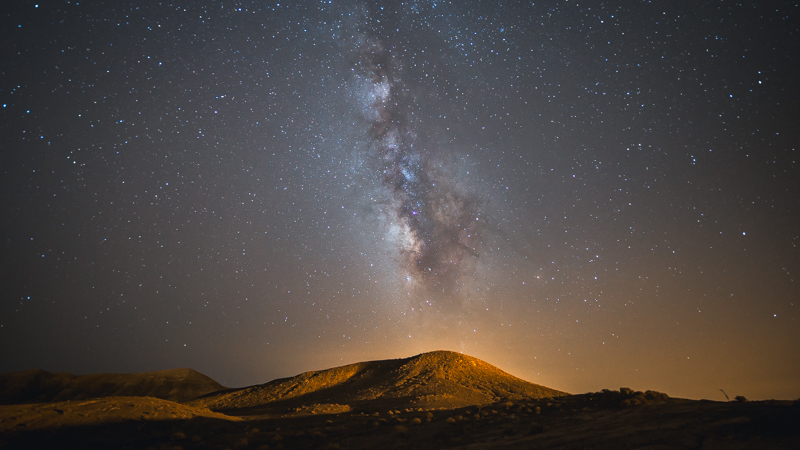
NiSi 15mm 4.0

- Good across frame sharpness and contrast
- No electronic contacts, so no Exif data
- Good minimum focus distance of only 0.2 m
- Nice, well defined sunstars
- Slightly wavy distortion
- Vignetting is comparably low at the maximum aperture but average stopped down
Well balanced ultra wide angle lens with a normal filter thread, compared to some competitors a bit heavy though
470g | $479 | MF | no Exif | Review | Aperture series | Sample images
buy from B&H | ebay.com | amazon.com | amazon.de (affiliate links)
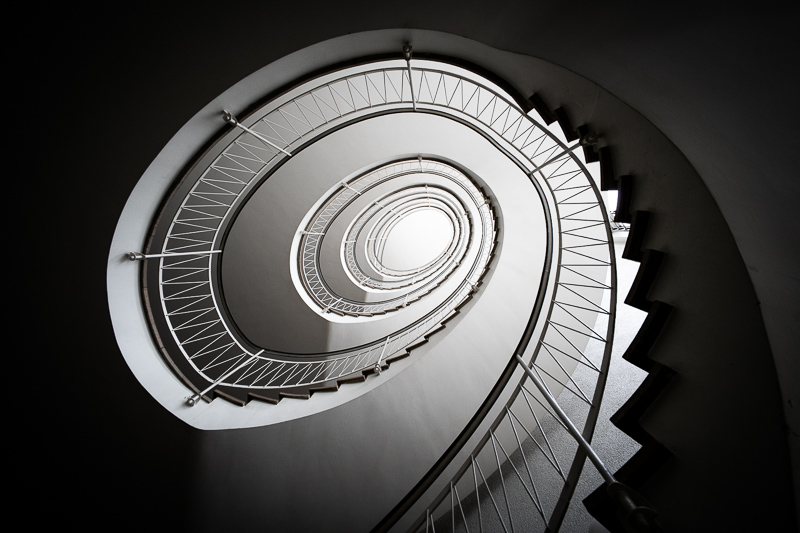
7Artisans 15mm 4.0
- Good across frame sharpness from f/4.0

- No electronic contacts, so no Exif data
- Nice, well defined sunstars
- good coma correction
- low distortion
- comparably bad minimum focus distance (0.4 m)
- too big and heavy
Solid ultra wide angle lens, but too big and heavy compared to the competition
544g | $359 | MF | no Exif | Review | Aperture series | Sample images
buy from manufacturer’s shop | B&H | ebay.com | amazon.de (affiliate links)
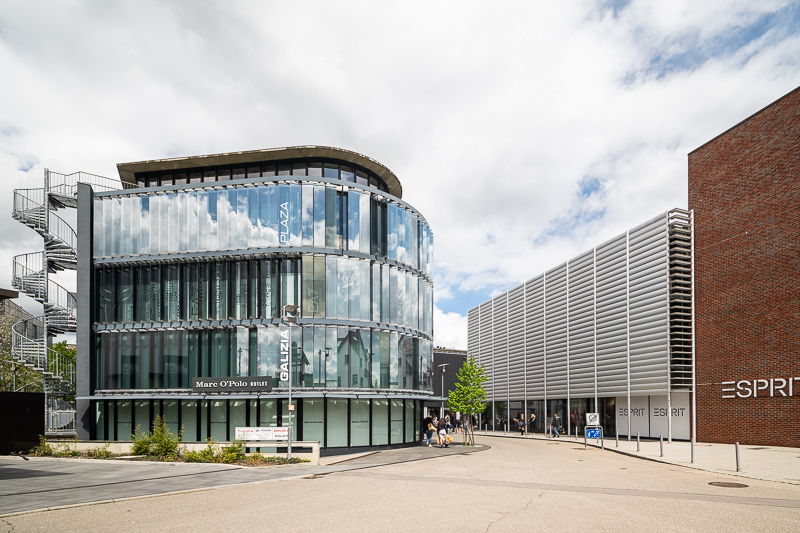
Voigtlander 15mm 4.5 E
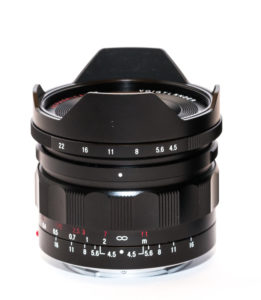
- Already at f/4.5 the center as well as midframe region is looking very good. Corners are ok, coma correction is pretty decent
- You have to use f/11 for the corners to look best
- Almost no distortion, decent flare resistance, very nice 10-stroke sunstars, but very high vignetting even stopped down
- Very small and lightweight, decently priced
In case f/4.5 is fast enough and you can get by with the high vignetting very nicely balanced lens for the A7 cameras
298g | $699 | MF | Exif | Review | Aperture series | Sample images
buy from ebay | amazon.com | B&H | amazon.de (affiliate links)
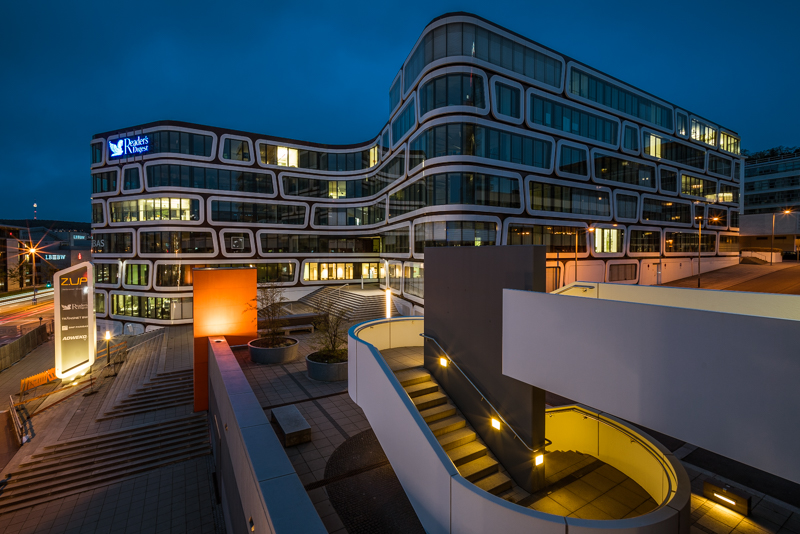
Laowa 15mm 4.5 Zero-D Shift

- surprisingly good corners, even shifted, but some midzone dip, best across frame performance between f/8.0 and f/11
- very little distortion, okay flare resistance, very nice sunstars
- 250g lighter than the Canon TS-E 17mm 4.0L and a bit smaller, but doesn’t tilt and doesn’t feature electronic contacts for Exif data
Widest tilt/shift lens available and a great choice for architecture photography especially in tight places
595g (EF Version) | $1199 | MF | no Exif | Review | Aperture series
buy from manufacturer’s homepage | | B&H | amazon.com | amazon.de | ebay.com | ebay.de (affiliate link)
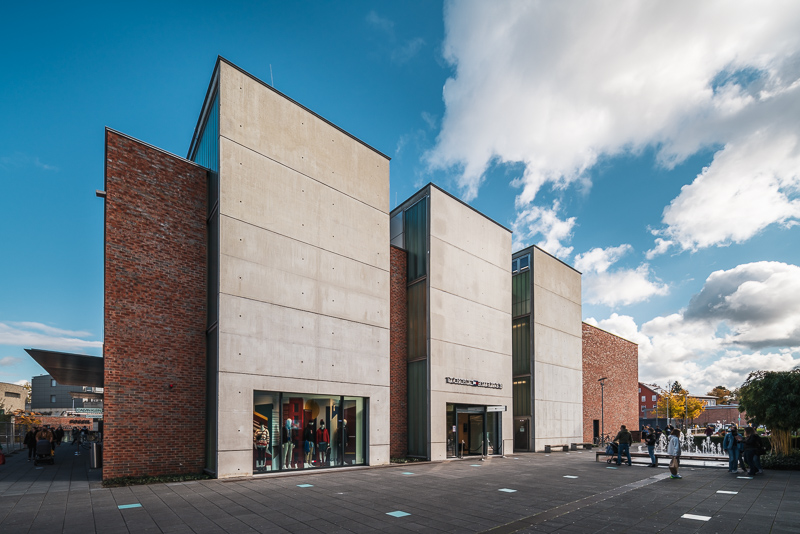
Laowa 15mm 5.0 “Cookie”
Recommended
- good sharpness stopped down
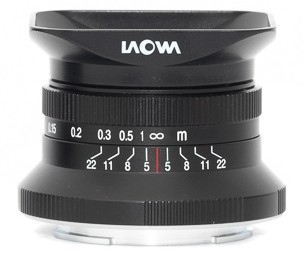
- good CA correction
- well defined sunstars
- nice minimum focus distance
- tiny size and very low weight
- flare resistance could be better
Tiny ultra wide angle lens and a very interesting option for all those that don’t need a faster maximum aperture. One of the few Laowa lenses with electronic contacts.
135g (E Version) | $399 | MF | Exif | Review | Aperture series
buy from manufacturer’s shop | B&H | ebay.com | amazon.com (affiliate links)
Viltrox FE 16mm 1.8 AF
Recommended
- very good performance from f/1.8 at all distances
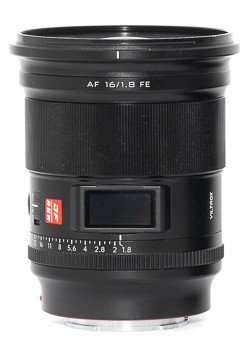
- good coma correction, very good from f/2.8
- pleasing bokeh
- good CA correction
- nice 18-point sunstars
- standard 77mm filter thread
- better than GM controls coupled with LC display (declickable aperture ring, focus hold button, AF/MF switch, preset distances)
- big and not exactly lightweight
- strong vignetting at f/1.8 to f/2.0
- flare resistance could be better
Viltrox described this as their fullframe benchmark lens when it was released in 2023 and for good reasons: great optical performance, useful controls coupled with an LC display not found anywhere else and all that at a surprisingly low and very competitive pricepoint.
560g | $549 | AF | Exif | Review | Sample images
buy from manufacturer’s shop (global) | B&H | ebay.com (affiliate links)
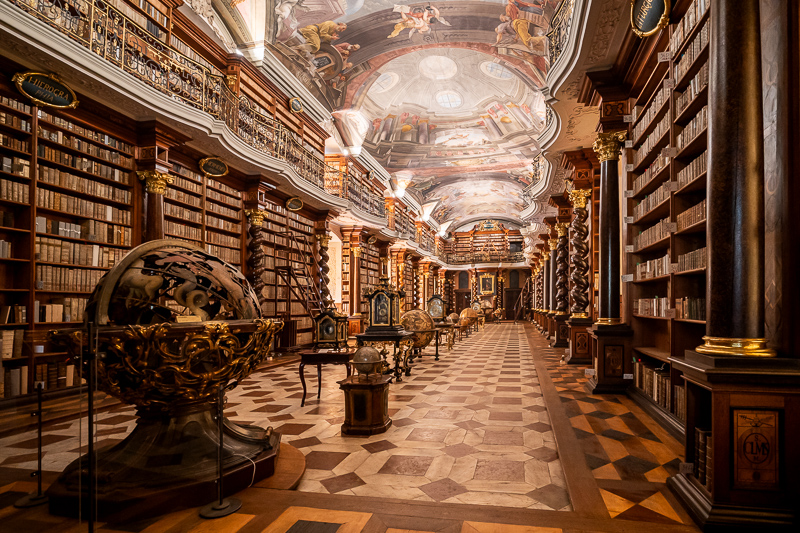
Sony FE 16-25mm 2.8 G
Sony’s compact ultra wide angle zoom. As an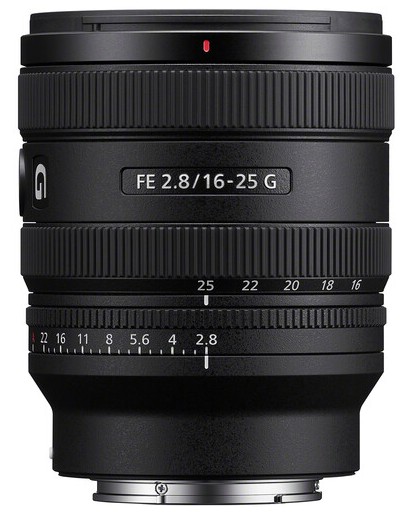 affordable option it is too expensive compared to the Tamron 17-28mm 2.8 and the recently released Sony FE 16mm 1.8 G is 200 bucks cheaper and can be cropped to give the same image as a 25mm 2.8 lens. Maybe this one is more aimed at videographers looking for a compact zoom lens to use on a gimbal.
affordable option it is too expensive compared to the Tamron 17-28mm 2.8 and the recently released Sony FE 16mm 1.8 G is 200 bucks cheaper and can be cropped to give the same image as a 25mm 2.8 lens. Maybe this one is more aimed at videographers looking for a compact zoom lens to use on a gimbal.
409g | $1198 | AF | Exif
buy from amazon.com | amazon.de | ebay.com | ebay.de | B&H (affiliate links)
Sony FE 16-35mm 2.8 GM

- Excellent sharpness in the center from wide open at any focal length
- Very good across the frame sharpness across most of the zoom range, slightly less so at 35 mm
- Pronounced distortion at both ends, average vignetting
- Flare is well controlled
- Above average size with very good build quality
- Pretty strong copy to copy variation, especially at the 35 mm end
An exceptional lens with the only real downside being the very significant price tag and some variation at the 35mm end
680g | $2198 | AF | Exif | MTF | TDP review | vs FE 4/16-35
buy from amazon.de | amazon.com | ebay.com | B&H (affiliate links)
Sony FE 16-35mm 2.8 GM II

- 130g lighter and 1 cm shorter than MK I
- great image quality across the zoom range and perfectly corrected Coma
- very high vignetting at the 16mm end
- in terms of flare resistance does not seem to be as good as Sony’s other recent ultra wide angle lenses (especially the Sony FE 12-24mm 2.8 GM)
Making a lens like this 130g lighter and 1 cm shorter while improving contrast and resolution is quite the achievement, sadly it seems there are some minor slip ups in the flare resistance and vignetting areas. Let’s hope this lens does not suffer from notable sample variation as did its predecessor.
547g | $2298 | AF | Exif | Lenstip Review
buy from amazon.de | amazon.com | ebay.com | B&H (affiliate links)
Sigma C 16-28mm 2.8 DG DN

- Very high and slightly wavy distortion
- Very high vignetting at the wide end
- Takes standard 72mm filters
Sigma’s 1mm wider answer to the Tamron 17-28mm 2.8. From what I gathered the Sigma shows higher vignetting figures and also has worse coma correction than the Tamron, without having reviewed this lens myself and/or a direct comparison I cannot really tell you which is the better lens at the end of the day though.
450g | $899 | AF | Exif
buy from amazon.de | amazon.com | ebay.com | ebay.de | B&H (affiliate links)
Sony FE 16-35mm 4.0 ZA OSS
- At f/4 the center is excellent across the zoom range, for best corners I would stop down at least to f/5.6, better f/8 where they are quite good.
- Pronounced distortion at both ends, average vignetting and annoying ghosting for some scenes but fine most of the time
- This is neither a light nor a small lens but it isn’t huge either. Build quality is good.
- The OSS is a relic from the early days of the FE system when there was no IBIS introduced to the cameras yet
A very versatile lens as it covers a very wide range of focal lengths with good optical quality, but these days the Sony FE 16-35mm 4.0 PZ G (see next entry) will be a better choice for most
518g | $998 | AF | Exif | Review | Sample images
buy from Amazon.com | Amazon.de | B&H photo (affiliate links)
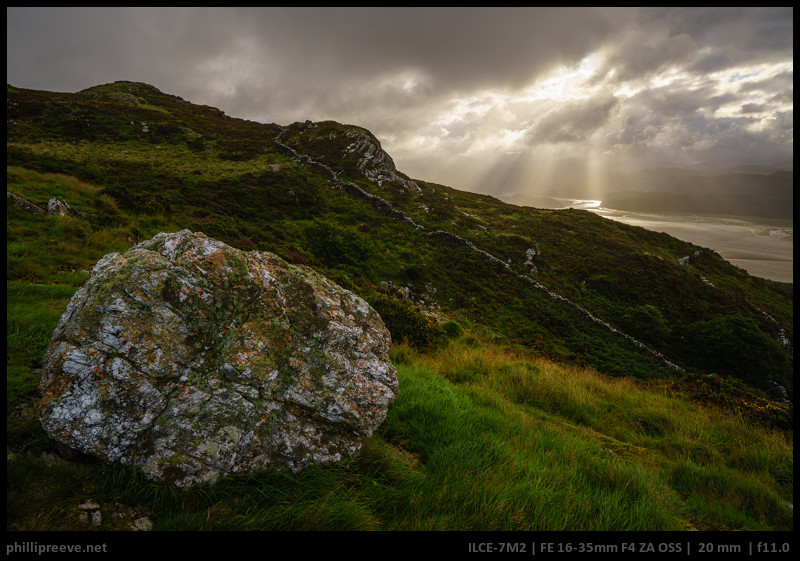
Sony FE 16-35mm 4.0 PZ G
Recommended
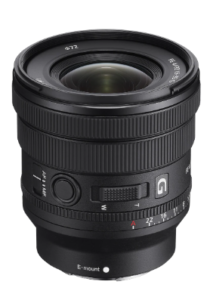 very sharp across the zoom range
very sharp across the zoom range- high distortion without correction profiles
- very fast AF
- good CA correction
- zoom is by wire and feels natural (way better than older PZ lenses) but looking at the lens won’t tell you what focal length is set
- nice set of controls (AF/MF switch, lens button, aperture ring etc.)
- compact and very lightweight for what it is
A lens that shows how much Sony’s lens design branch has improved in only a few years: better, smaller and cheaper than the predecessor, what is not to like?
353g | $1198 | AF | Exif
buy from Amazon.com | Amazon.de | ebay.com | ebay.de | B&H (affiliate links)
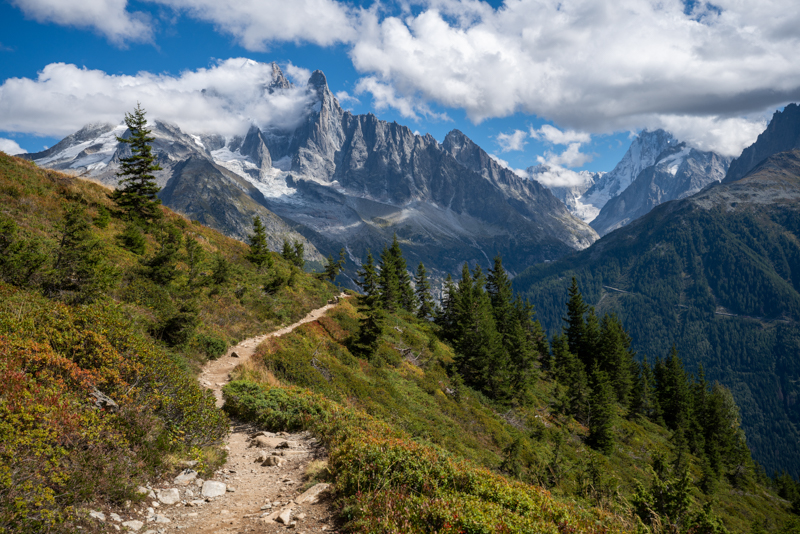
Tamron 17-28mm 2.8 Di III RXD
Recommended

- Very good image quality at 17mm slightly worse at 28mm (coma and sharpness)
- Nice minimum focus distance, especially at the wide end
- Flare is well controlled
- High distortion and slight color cast in the corners at the wide end
- Average vignetting, CA correction and bokeh
- Takes standard 67 mm filters
- Very compact for what it is, okay build quality
- The lightest ultra wide angle zoom for Sony-E despite being an f/2.8 lens
A very good choice if you don’t mind the restricted zoom range and need an f/2.8 lens
420g | $799 | AF | Exif | Review | Sample Images
buy from amazon.com | amazon.de | B&H (affiliate links)
Sigma C 17mm 4.0 DG DN
This is a compact and lightweight lens with 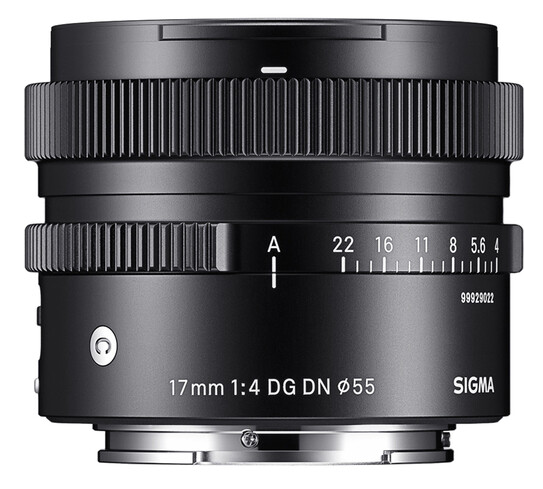 very good sharpness but also very high vignetting. Flare resistance also seems to be good, but its sunstars are nothing to write home about. If you don’t need a faster maximum aperture and you don’t have this focal length covered with a zoom already, this can be an interesting option.
very good sharpness but also very high vignetting. Flare resistance also seems to be good, but its sunstars are nothing to write home about. If you don’t need a faster maximum aperture and you don’t have this focal length covered with a zoom already, this can be an interesting option.
220g | $599 | AF | Exif
buy from amazon.de | amazon.com | ebay.com | ebay.de | B&H (affiliate links)
Canon TS-E 17mm 4.0 L
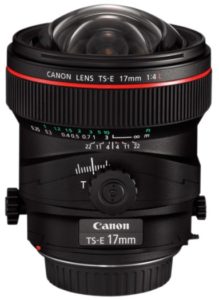
- center and midframe are always good, corners and especially shifted corners need f/8 to f/11
- very little distortion, okay flare resistance, nice sunstars stopped down thanks to 8 aperture blades
- needs an adapter with the correct length to show its full potential
The Laowa 15mm 4.5 Shift is a slightly better performer – at least on Sony cameras – so if you don’t need Tilt also have a look at that one
830g + adapter | $1500 (used) | MF | Exif | Review | Aperture series | Sample images
buy from amazon.com | amazon.de | B&H | ebay.com | ebay.de (affiliate links)

Zeiss Batis 18mm 2.8
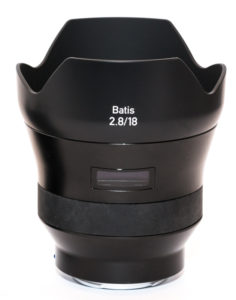
- At f/2.8 good to very good across frame performance even in the extreme corners. Coma correction pretty good as well (a tiny bit worse in comparison to the 21mm Loxia but visibly less vignetting).
- f/4.0: corners are now very good too, so stopping down further will only increase depth of field.
- Wavy distortion you want to correct for architecture shots, ok to good flare resistance, 9 rounded aperture blades.
- Quite big but very lightweight and also very expensive.
High performance modern wideangle lens which is also very good for astrophotography but comes at a too high price
330g | $1549 | AF | Exif | Review | Aperture series | Sample images
buy from ebay | amazon.com | B&H | amazon.de (affiliate links)
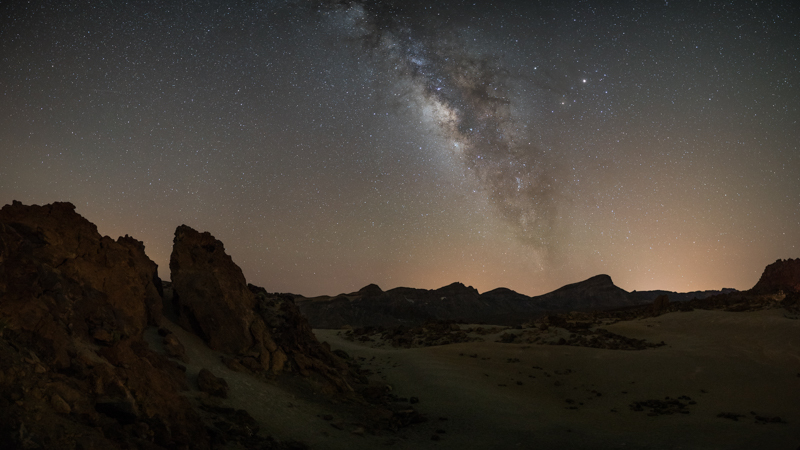
Samyang FE 18mm 2.8 AF

- Good center performance, never great in the corners
- Very high vignetting, even stopped down
- Very compact and also lightweight
- As always with Samyang lenses, make sure you did not get a decentered copy (like we did) within the return period
Lightest and cheapest ultra wide AF prime, recommended to those that don’t need maximum image quality
143g | $299 | AF | Exif | Review
buy from amazon.com | amazon.de | B&H | ebay.com (affiliate links)
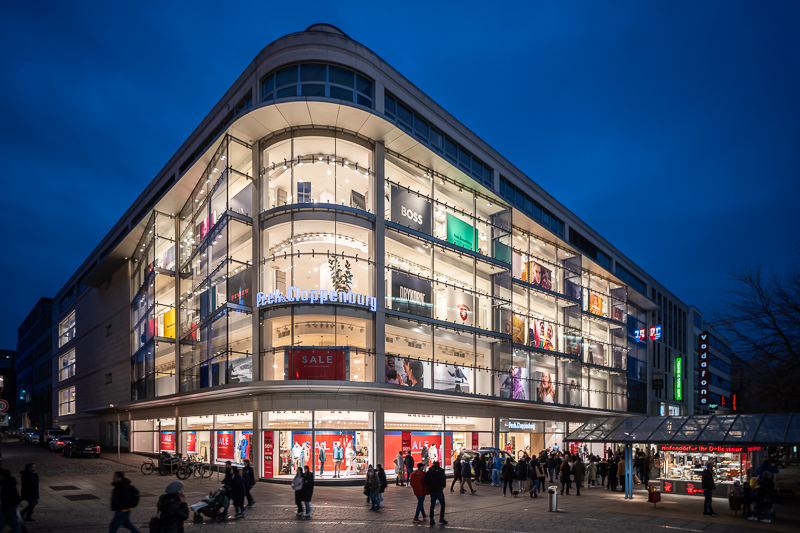
Funleader 18mm 8.0 Pro
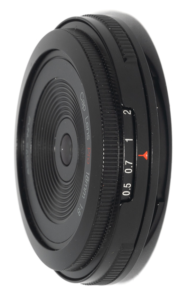
- smallest fullframe E-mount lens and surprisingly nice mechanical and casing design
- bad sharpness
- bad flare resistance
- very high and wavy distortion
- very strong color cast
When you look at it you really want to like it, but because of its optical performance that is hardly possible
71g | $140 | MF | no Exif | Review | Sample Images
buy from ebay.com | ebay.de | amazon.de (affiliate links)
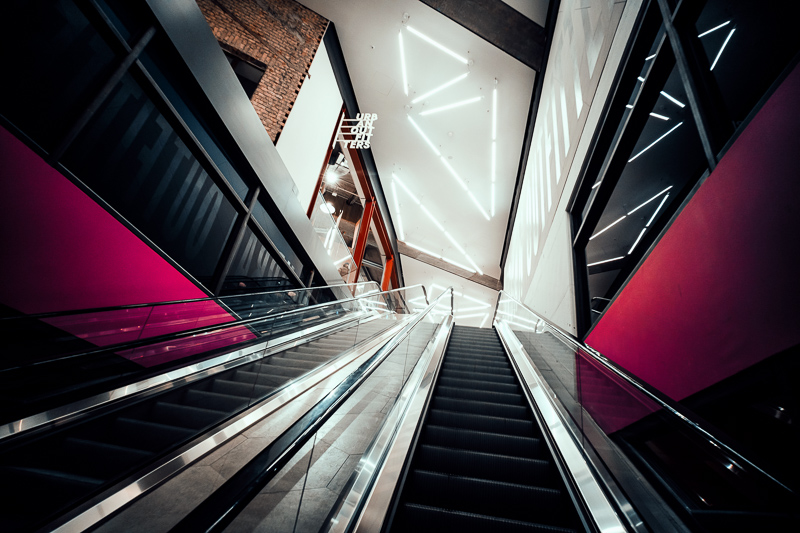
AstrHori 18mm 8.0 Shift

- mechanics allow for ±6 mm shift, but shifting ~2mm or more and you get black corners on a fullframe camera
- mediocre sharpness unshifted
- very high and wavy distortion
- decent coma and CA correction as well as vignetting (only unshifted)
- basic mechanical design without locking knob for the shift function and the rotation
Small, lightweight and cheap, but not really a lens we can recommend because of the long list of flaws – also not really a shift lens on fullframe
167g | $119 | MF | no Exif | Review | Sample images
buy from ebay.com | ebay.de | amazon.de (affiliate links)
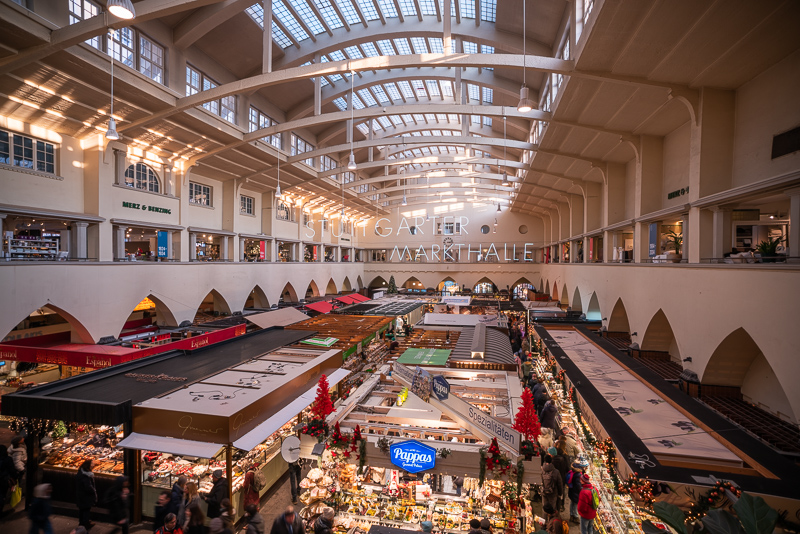
Closing Remarks
Articles like this require many hours of work. If you found it helpful, you can support us by:
- Using one of our affiliate links if you buy a lens (or anything else).
- If you own an interesting and/or exotic lens and you would be willing to part with it for a few weeks for us to write a review just leave a note.
- It also helps a lot if you share this article on social media and with your friends.
Thanks!
Other Articles
- Our lens reviews
- Lens aberrations explained
- How to take better pictures?
- Affordable manual lenses for the Sony A7 Series
Support Us
Did you find this article useful or just liked reading it? Treat us to a coffee!
![]()
![]()
![]() via Paypal
via Paypal
This site contains affiliate links. If you make a purchase using any of the links marked as affiliate links, I may receive a small commission at no additional cost to you. This helps support the creation of future content.
The Team
Latest posts by The Team (see all)
- Sony FE Lenses: The honest Guide for the A7/A9/A1 Series - March 18, 2025
- Guide to best Sony E-Mount 35mm Lenses for A7/A9/A1 series - March 8, 2025
- Guide to the best Portrait Lenses – Sony A7/A9/A1 series - February 22, 2025

If you were to include Loxia 21mm in the list, would someone choose it?
It is already covered in the 21-35mm lenses article and in fact two of us chose it already 🙂
Bastian
I saw the other article later. Thanks for the reply and for the effort. Really useful articles
Hallo Phillip,Hallo Jannik,Hallo Bastian.
I like your site. All this reviews from older lens is great.
IF You need a Lensbaby Fisheye for your Fisheye review,i would
give it to you for the time you need for the testings.
best regards
Klaus
As one terribly anal and miserly photog, I would love to spend some serious money on a superwide but can’t choose from this dizzying selection of glass. Will stick with my ‘wavy’ Samyang 14mm until the perfect superwide comes along – yeah, right!
Great and clearly useable information – thanks for the hours you spend bringing such valuable insight to us all.
“At f/5.6 the center is sharp but corners and also midframe region suffer from huge field curvature because of the thick filter stack in front of the A7-series’ sensors.”
Could You please explain this more in detail.
Please have a look at my 28mm 2.0 Ultron Review, I have explained this in great detail there: http://phillipreeve.net/blog/review-voigtlander-ultron-28mm-2-0/
Thanks for the excellent write-up. Just letting you know that the link to the 21-35mm guide isn’t working. 🙂
Thank for the feedback and the heads up, corrected!
Another heads up for the Tokina RMC 17/3.5.
I’m pleasantly surprised at it’s usability. Far better than I expected. (I’m using it on an Infrared converted A7)
Thank you for your comment!
Maybe you like to share a link to some of your Infrared work with this lens?
Hi Bastian,
IR A7 away at Kolari Vision for the existing IR filter (standard 2mm thick 830nm), to be swapped for one of their new “Thin” 850nm, Anti-reflection coated filters.
Anyway, I only got the Tokina shortly before sending the A7 off, so I have only had a brief time to test it, during which it impressed me.
It should perform even better with the Kolari “thin filter” mod, for better corner performance, plus their new anti reflection coating, making “hot spots” and other infrared flare issues, far less of a problem.
Be glad to share, when I have some proper results.
*[For your interest, my existing IR A7 Album on Flickr is here:
https://www.flickr.com/photos/27297062@N02/albums/72157670965595765
Plus some testing of the lenses I’ve tried, in this thread on Fred Miranda Alt. Gear Forum: (From page 2 is with the A7) http://www.fredmiranda.com/forum/topic/1376190
I mainly use OM Zuiko lenses from 21mm-100mm (the early SC versions are best for IR), and occasionally the FE 24-70/4, though without the AR coated IR filter, that does have a diffuse hot spot issue.]
* As this is not really of relevance to this thread, feel free to delete. ;o)
I used this lens in the past with Kodak HEI infrared films and it delivered good results, Also on Fuji Velvia it did quite well above f5,6. The older RMC version is much better than the 17mm ATX AF version with an aspherical lens. The Tokina performed also better than the Tamron SP 17mm f3,5 SP.
Nice review guys!
Any news on when Voigtlander will release the e-mount f5.6/12? Would you do a comparison review of it against f5.6/10?
Thanks.
It should be released in september as far as I know.
In case I get a review sample I will of course compare it to the 10mm 5.6.
Thanks guys for this much appreciated article.
I own the Tokina MF 17mm F3.5 for Canon FD with my Sony Alpha 7ii. Always stop down to min. f8 I am much fascinated about details and sharpness compared to the results in the past with my Canon A1 on film.
However, I would like to know if and how I can use the LR profile linked in your article above. Are there more LR lens profiles available for Canon FD lenses?
It is the only one I made, sorry!
Bastian
Hi Bastian,
I am going to buy one Tokina 17/3.5. Unfortunately, the link for LR correction is deleted from your Dropbox. could you please do me a favor and upload it again?
thank you very much 🙂
Greetings,
Salar
Hi Thomas,
Interesting I have a Canon A1 and recently I also bought an a7ii and I owned few nice FD lenses. Based on your comment I bought the Tokina 17/3.5 and it is on the way to me!
I am also trying to find the LR correction for it but unfortunately, the Bastian’s link above is not working on Dropbox anymore :(.
would be happy to know if you got something …
Greetings,
Salar
As soon as I found it on my HDD I will send you a new link 😉
Hi,
Can you suggest how to use Voigtlander Super Wide-Heliar 15mm f/4.5 Aspherical on Canon body.
Any availability of a specific adapter to use this lens on canon 70D.
Regards,
Virendra
There is no way to use it on a Canon without irrepably damagin the camera.
hello guys, I love this article so much. I’m looking for wide angle lens on tight budget.
Voigtlander 5.6/12 M39
Samyang 2.8/14
Tokina 3.5/17 SL
Canon FD 4/17
Canon (n)FD 2.8/20
what lenses would you recommend for me?
FYI, I’m gonna use it for landscape using Graduated filter
thank you
You need pretty big filters and a lens specific adapter for the 14mm 2.8 Samyang.
You also need the filter adapter for the 12mm 5.6 M39 (which is quite rare), so you might want to settle for one of the others. If you intend to shoot directly into the sun when using filters also don’t buy the Tokina 17mm 3.5 because it is very prone to flare.
I already think about the filter, samyang 14mm have samyang special filter holder for the lens, you can ebay it and also they use 165 filter systems.
Thank you for the advice
I think the Canon FD 2.8/20 is your best choice here because you can use filters without a hassle and apart from the flare resistance it is a very good lens for landscapes.
hi phillip how about canon fd 17mm f4?
I have SEL 28mm f2 so I think canon 20mm don’t give much different.
I think the 4/17 is weaker but still okay at f/11
how about Konica Minolta AF17-35mm F2.8-4
have you tried it? what is your opinion about this lens?
Haven’t tried it, have no opinion, sorry!
I wouldn’t buy the minolta 17-35 f2.8-f4 it’s the Same optics as the older Tamron 17-35 f2.8-f4. not recommended for digital.
Hello Phillip and Bastian,
Thank you for this article, and your site.
I’m looking for a wide angle lens, less than 20 mm, to photograph landscapes, with the possibility of using slot-in filter system, and less than ~ 600 €.
So I think my best option is the Tokina 3.5/17 SL, but I’ve also read good things about the Carl Zeiss Contax T* 18mm f4. I like also the Voigtlander 5.6/12 M39.
I already have the Carl Zeiss Contax 24mm f2.8 and 135mm f2.8 and i am very happy with them.
Could you tell me which one will work best in my Sony A7R?
Thank you very much in advance.
I did unfortuntaley not yet get the chance to lay my hands on the Contax T* 18mm 4.0 but I would guess it will be the best of the bunch on the A7r.
The M39 12mm 5.6 is not a very good idea on the A7r, the Sensor is least suited to rangefinder wide angle lenses.
The Tokina has some problems with flare the Contax might not encounter due to the T* coating.
You might also appreciate having the same color rendition in all lenses (I do), which could also stir towards the Contax.
In case you buy one please share your experiences with it here!
Thank you very much Bastian, you’ve helped me a lot.
I think I’ll buy the Contax T* 18mm f4. I will share my experience with you.
Your site is a source of inspiration!
Regarding legacy wide angles problems on A7 ?
The front-end filter solution or put glasses on the lenses 🙂
http://www.fredmiranda.com/forum/topic/1453834/0
Quite an interesting approach, RF correction lenses, the centerfilter of the 21st century 🙂
Hi Phillip/Bastian,
I like your reviews on lenses, and I really want to get Voigtlander 21mm but the problem is I would like to use Lee filters with this lens, the problem is with lens hood, is there any way I can use Lee filters with this lens
Thank you
JAROSLAV
have you guys heard of the 15mm irix?
To big to be used on E-mount cameras and flare issues like a lens from the 70s (well, actually the Irix is much worse compared to most legacy lenses…).
me bad just realized that you did answer my question.
thanks so much
what an awesome review, thank you so much for taking the time to educate us.
i cant wait to see your reviews on the latest voigtlander lens
and i seen some wide angle lens called irix 15 2.8 that claim to be awesome as well what are your thoughts on that.
or the new batis.
Hi, for the tokina lens that shown in your affiliate link, does that include the e mount or i have to buy it separately?
And if so, do you have any information where to buy the mount?
You need an adapter for it. Which adapter you need depends on the mount of the lens, it came in different mounts.
Thank you guys so much for this great write up. I have been thinking about getting the 15mm voigtlander. Do you know if there is a big difference between the emount version and the m version? I keep seeing m-mount versions used for a much lower price. Also I see that the current emount is version III. Do you know if this means they have updated the coatings? If I was to get the m mount version I could use it with a close-focus adapter (there are many cheaper third party adapters now). I have seen some images taken with the adapters and the added bokeh ability seems appealing for portraits. Phillip, do you have any opinion on the use of these adapters? Thank you!
The optics are the same between the III-version of the M-mount lens and the E-mount lens. The older I and II version is a different design and won’t work as well on the a7 series.
There is no reason not to use the M-mount version on a helicoid adapter and if you can live without EXIF information the M-mount version is a good choice.
toring apart between 16-35mm 2.8, loxia 21mm 2.8 or 18mm batis 2.8 ?
How about the Sony 12-24mm G?
and the Sony 16-35mm GM?
Update is in the works. Both are very very sharp lenses. Flare resistance, bulk and price seems to be the only disadvantage compared to the better primes.
Hallo Bastian,
Have you tried the Tokina 17/3.5 on an A7?
When I scaledown the images I took with this lens to 12Mp, they are not that bad, roughly comparable to your result on a Nikon D700 but, at 24Mp I think it’s quite a bit worse, worse than my Minolta MD 20/2.8.
I also prefer my Minolta 20 mm 2.8 to my Vivitar 17mm 3.5 (Tokina formulation)… but I use it on the A6000.
For some reason, the Minolta MD 20mm 2.8 performed very badly when compared to Canon 20mm FD 2.8 by P. Reeve.
My 20mm shows the same problems as in Phillip’s test.
Don’t expect comparison to Minolta. While most Sony lenses are based on Minolta designs improved over time, the site started as an opus to old lenses to only regret later and tell us reader that exactly what was stated they didn’t need is what they ultimately choose: the latest, most expensive Sony lenses. It has almost became a Sony lenses “religion” in the latest reviews and I will not buy even one and don’t like their plain, modern aseptic look at all and wonder how excellent reviewers changed their minds 18” degrees in less than 10 years.
I decided to unpublish two of your more agressive posts. If you disagree with us that is fine. But you can do so politely or not at all on this blog.
My priorities have certainly changed in recent years. But I would disagree that my views have changed 180°. Back when I was a poor student price/performance was super important. But I never put much emphasis on lens „look“ I always judged lenses by their performance and was very conscious that I accepted a number of compromises. Now I have more money and I make fewer compromises.
That doesn‘t mean that you can‘t take very fine images with legacy lenses or that I would change most of my recommendations in older articles. But you will have to deal with strong flare, lower contrast, no EXIF and a little lower sharpness. No deal for many images, but a dealbreaker for some.
And while it is probably true that some older A-mount Sonys are based on Miinolta designs that isn‘t true for modern E-mount lenses.
Copy&Paste error on the 2.8/16-35 GM? “Vignetting at 12 mm …”
Thanks for pointing it out. Somehow it didn’t save my edit.
Hi Bastian. As you mentioned replacing the Samyang 14/2.8, I would say the newer 14/2.4 is a big step up. It continues the awesome coma correction and has very low distortion. The build quality of my sample is very nice. That said, it is really quite expensive and I don’t have experience with the Irix 15.
Thanks guys, for the enthusiastic, dedicated articles you write. Very enjoyable and informative.
Thanks, for the reviews.
The comment on the Sony FE 2.8/16-35 GM contains a typo.
“Vignetting at 12 mm is …”
Which should read “Vignetting at 16 mm is…”
fixed, thanks.
Have you had any experience of the ultra-wide angle lens SIGMA 14mm, F/1.8 DG HSM Art for Sony E? I’m new to this website, that I must admit I didn’t know: so, please, accept my compliments for your excellent in-depth reviews.
Thank you very much!
Considering there is the great Laowa 15mm 2.0 for Sony FE I would not bother with the huge Sigma 14mm 1.8.
No love for Contax 18 f4?
It is too expensive to make the list. Although I have to agree if you are looking for a prime with exactly 18mm it is probably the next best option to the Batis (and Milvus, and old ZF/ZE).
Hi guys,
Thanks for the great list!
I just switched from Nikon (D5200) to Sony A7s (found one new for <900$!) and I am considering 2 options for wide lenses:
Keep my Tokina 11-16 (usable 15-16 in FF) using an adaptor.
Sell the Tokina 11-16 and acquire a Laowa 2.0/15
What do you think is the most sensible choice? I mostly use wide lenses for astro and architecture
Thank you!
Sell the Tokina, get the Laowa.
I was once using the Tokina on the D700 (also full frame with 12mp) and while there won’t be completely black corners at 15-16mm the performance is really really bad in that area.
PS: Laowa 15mm 2.0 on Sony A7s is an amazing combination for astrophotography!
Ok thank you for the advice! I loved the Tokina (apart from the horrible green flare), so it’s going to be kind of heartbreaking! Still considering buying a cheap electronic-less adapter to give
it a shot, as I need one for vintage Nikon FF lenses anyway. In your opinion, adaptor and sensor size consideration aside, is the overall performance of the Laowa superior to the Tokina’s?
Thank you again
Yes I do.
While not perfect the Laowa is much better in handling lens flare. This is also the reason I tend to mostly avoid Tokina lenses nowadays.
With the 2/15 on the A7s compared to the 2.8/11-16 on the D5200 you will gain several stops.
You will be amazed how much better quality your astrophotography shots will have.
I was already amazed when going from D800 + 14-24mm 2.8 to A7s + 14-24mm 2.8.
Thanks a lot, you helped me more than the zillion pages I was browsing about this. Great website by the way!
Happy we could help 🙂
Great info – have you done something similar for fisheye lenses? I’m hearing good things about the Canon. I’m looking for full-on fisheye, not rectilinear.
We were thinking about doing that but we probably haven’t tried enough ourselves to write such a guide on these.
You mean the Canon fisheye zoom that switches between circular and full frame? I had it once, seemed very good. But I haven’t used it on Sony.
Hey guys,
I am absolutely addicted to your website. I bought a Sony A7II without knowing its true potential. Thanks to your blog I‘m constantly researching which vintage lense to buy next. Of the various sources on manual lenses your website is simply the best source.
I try to buy them through affiliate links if possible, but if there are only international eBay.com-links I seem to miss German eBay.de-offers. (iOS and Android, through new tab and in eBay-App). I am currently bidding on an offer I couldn’t find through your link ( Tokina 17 mm 3.5)
Is there a workaround? I can supply Screenshots if needed.
Kind regards and please keep up your great work!
Karsten
Dear Karsten,
thanks for the kind words and your support!
You can use any of our ebay.de affiliate links (in our FE guide there should be plenty) if you make any purchase, it will still work even if the link is for another article.
Hi Bastian,
of course! Sometimes the solution is so obvious….I’ll keep using your affiliate links.
But since I’m no expert on manual lenses I currently still stick to the more affordable ones. Your different guides definitely help a lot on making the first steps in this market: If I want an ultra-wide-angle lense you have the guide.
Kind regards
Karsten
Get me your contact information and the next time in Europe I can let you borrow my AIS Nikkor 13mm f/5.6 ultra wide lens.
Dear Dan,
I am always interested in having a look at exotic lenses like the 13mm f/5.6 and would gladly take your offer 🙂
I will send you my contact data via your E-mail.
Dan, Please don’t forget to bring your 300mm f2.0 AIS
as well so we can compare it with mine.
A very exhaustive and informative coverage of ultra wide angle territory, kudos!
I was wondering if any of the Zeiss Distagon 15mm f/2.8 versions – classic or Milvus – was considered as a viable adapted manual focus ultra wide lens, or if price, size & weight – or image quality – ruled it out as a candidate?
From reviews I have read, the distagon has: extraordinary build & handling Zeiss is known for in both its versions, manual aperture ring for Nikon mount, filter thread for traditional filters, relatively easy corrected symmetric barrel distortion, virtually no chromatic aberrations, average to good flare resistance, excellent coma resistance, nice 18-point sunstars, excellent resolution, contrast & color accuracy, and an overall performance that should handily edge out the Laowa and Voigtländer 15mm contenders. All this, of course, with the exception of the inconvenient weight at 820gr and 880gr, classic and Milvus versions respectively.
The real question is of course if the performance is negatively impacted by adapters on E-mount, and if ZE or ZF mounts are better or worse in this respect.
Cheers!
Mostly due to price, size and weight issues, yes.
Although some stores were selling the Classic for rather tempting prices after the transition to Milvus…
Indeed. That’s precisely why I am considering the classic distagon again, lol: it now sells for roughly US$1000 less than the Milvus, and as a bonus I avoid the rubberized focus ring, which I personally don’t like.
Have any of the team adapted Milvus lenses for F-mount on E-mount? Zeiss recommends Novoflex adapters, but I have no reports as to real loss of corner performance, sensor reflections, light leaks, etc.
I would be prepared to reach deeper in my pocket for the 15mm distagon if image quality remains more or less intact with adapters.
I have not been able to find any direct image comparisons of Zeiss Milvus or classic lenses on E-mount vs native CaNikon, would be an interesting topic I think. Much like considering the Voigtländer or Zeiss rangefinder lenses as an interesting imaging resource for Sony E+mount via Techart adapter, for example.
Cheers!
WOW
Such an informative website you guys made…!
I have a question though….
About a year back I switched from Nikon to Sony apsc and now upgraded to Sony full frame. I was just wondering if anybody here used an apsc fisheye on fullframe and how were the results.
My targets are cheap third party lenses like 7artiSan 7mm f2.5 E mount or the Samyang 8mm fisheye for APSC e mount. I want to have a look how the manually cropped ones differ from inbuilt APSC mode. (that option is shooting my A7ii body in APSC mode which crops the photo automatically to roughly 10MP area centrally)
here have read negative things about using adapters on fisheye/ultrawide lenses. As I am searching for cheap options ,therefore these two lenses I googled for and found very good considering ‘ bang for bucks’ .But other lens ideas are also welcomed unless pricey.
Thanks in advance
None of us is a regular fisheye shooter.
With ultrawides (including Fisheyes) an adapter with very exact length is recommended, those are usually a bit more pricey.
With the Samyang 12mm 2.8 I had quite positive experience, it is rather well corrected for a Fisheye lens and rather affordable.
It is not as compact as you might want though.
I see Bastian has already replied, but I should put in a +1 doe the Samyang 12mm fisheye too. The projection is more useful than many non-circular fisheyes, it’s sharp enough and has good contrast. And cheap. And for something you use as little as a fisheye, Samyang build in adequate.
But were you thinking of using an APS fisheye to get a circular fisheye on FF? I think most non-circular fisheyes on APS have just a slightly too large image circle to get a perfect circle on FF.
Bastian, I own the Tokina (rebranded as Vivitar). I wanted to download your LR profile, but the link is dead?
Try this one.
Great article guys! Well worth the ten minutes. I’m in the market for a replacement of my older voigtlander but may also be considering a fisheye lens as that could work with the jobs I mostly undertake. Did you guys ever get around to write a post about FE lenses for Sony a7 series?
Guide for FE lenses for A7 series
What about the Voigtlander 21mm f1.8 Ultron?
1. We haven’t reviewed it.
2. Because of field curvature issues a bad idea to use in on Sony cameras (no PCX filter available because of big filter diameter).
Great list guys!
As a happy owner of Sony 12-24G I’d suggest 2 ‘corrections’:
1) yes, it has the usual uwa distortion at 12mm (3,8% according to photozone), but at 14mm it’s already the same level as Laowa 15/2 (close to 1%) and since it changes from barrel to pincussion after that, it’s about 0 arround 15mm and the rest is < 2%, so all in all quite good for such extreme wide angle zoom. Also it's worth noting, as it's native Sony lens, the distortion is corrected when shooting for example interiors even at 12mm, so you're not distracted by it when composing.
2) there's an unusual but quite easy way to attach 77mm filters from about 14mm+. Not sure if there's any desing intention behind it or a pure coincidence, but I'd definitely rate it as 'half' filter support, could be the one feature for many 'also landscape' photographers that just want to use ND or even astro filter from time to time.
https://www.fredmiranda.com/forum/topic/1503152/0?year=2017
Also I'd not limit the list to 20mm – 22 might be more logical threshold as 'still less than 24mm', namely 21mm is still uwa for many people. Even if there's some overlap with other lists.
It feels so good to read your reviews and those beautiful pictures you take. Also, while buying a lens, your precise conclusion helps a lot. Although, I don’t have most of these lenses you’ve mentioned I tried some lenses and I think you should make your reviews on them.
I come from Nikon world with many modern lenses and also some of the best AI-S/AI series lenses. I tried the following lenses and some of them amazed me:
1. Nikon AF-S 300mm f/4D – This lens sells for $1350 from Nikon or avg $550 in eBay, I used mostly for wildlife. Last week, used this lens for portraits on A7SII in rain and the performance is mind blowing. The pictures are very sharp (I can’t even apply some sharpness in LR) and the character is similar to those $2000+ lenses. There is no coma, no flares (comes with collapsible hood) and very easy to focus (I feel this is the best big lens I used in MF – because it has reachable focus ring and very easy to navigate unlike zoom lenses).
2. Nikon 15mm f/3.5 AIS – Specialty of this lens is no distortion at 15mm and very sharp even wide open. Lens looks like a fish eye lens, but it is not. The design and the build quality is similar to 13mm f/5.6 (which is known as Nikon’s holy grail – recently sold for $52k in eBay). It’s surprising that this lens sells in eBay for around $800 in good condition (I was lucky to get a mint condition couple of years back). Based on my experience with this lens, I think no other lens can perform to this level at 15mm.
3. Macro – I have 3 Nikon macro lenses with aperture ring (55mm f/2.8 AIS, AF 60mm f/2.8D and AF 105mm f/2.8D). Although I liked how these performed on Sony, realized that these lenses don’t go as much closer like they do on Nikon. Among the 3 lenses, 60mm was the best in macro, with almost no coma. Next was 55mm.
Nikkor 60mm f/2.8 is very hard to focus manually
Hi, thank you for a great job! Will you add any Sigma lenses?
I will consider that for the next update.
The 14mm Sigma Art is indeed very heavy, but it’s pretty wonderful. I have it rented at the moment and feel like it’s beating the CV and Laowa 15s.
That’s a great article. Could you please add the Tamron 17-28 here?
Yeah, it would be interesting to hear if any of you swapped the Sony16-35 f4 for the Tamron 17-28. Or does the zoom range deter all of you?
The Tamron feels like a better choice for me: I don’t really know what I want, but want to be able to shoot landscape, architecture and dabble a bit in astro as well. Not sure what else, since I’m new to UWAs.
Phillip is still happy with the 16-35mm 4.0 but he is not really into astrophotography.
Jannik is currently using the Sigma 14-24mm 2.8.
Juriaan, David and me are not using any ultra wide angle zoom as we prefer much faster primes at the often lacking long end of the zooms.
So we often use a slower UWA prime (or a faster it we are looking at some astrophotograpy) with a fast wide angle prime (24-35mm f/1.2-f/1.4) that also allows for some better subject separation.
You have one of the best – if not the best – review sites for Sony users on the web. Quite curious why you haven’t given the 16-35/2.8 GM a full review yet. Yes, there are many other reviews available, but always good to be able to compare across the same standard.
Looking forward to your review of the Sigma 14-24/2.8…
Because none of us has enough personal interest in that lens to buy it.
But it looks like a reader may provide a review sample this month.
Would you be interested in testing the Sigma 14-24 2.8 DN with the Haida rear ND filter set ?
Jannik just bought one a week ago 🙂
Awesome! If he hasn’t got any rear filters and would like to test the Haida set, let me know!
I would be interested in a review of the Sigma 14-24 f2.8 e-mount or the 12-24 f4 ef mount with MC11.
on another note-
I’d like to get an ultrawide but I’d also want to be able to stay with NISI 100mm filters. I’d love to be able to use filters but would also like a faster lens for astrophotography.
It seems other than the laowa 10-18 you can’t go below 16mm without also getting a specialized filter kit which dramatically increases price.
If something has to be given up, what would you recommend to give up?
Give up zooms and use primes instead, solves all your problems.
E.g: Laowa 15mm f/2 + Sony FE 24mm 1.4 GM or Loxia 21mm 2.8
$$$$ more and space in the camera bag are other things to give up that I didn’t consider 🙂
It would be a pretty sweet setup though.
I’m just griping, I want my cake and be able to eat it too. I’m not a pro and it would be hard for me to justify that level of purchase.
Hi, what about recent Samyang 18mm/f2.8?
Proh ‘inspired’ by Batis but more budget friendly..
We will consider it in the next update.
Nisi 100mm filters will neither fit on 12-24 nor on 14-24 zooms. Sigma 2.8/14-24 DG DN is exceptionally good ultra-wide zoom. Some early users say the best zoom you can get for astro and landscape application and on par with best e-mount primes. If you need filters you can use either Gel filters for the rear filter slot or have to use the more costly 150mm front filters. Haida has announced a so far unique round filter system for this Sigma zoom. But still 150 and therefore it cannot cheap. I guess holder, combined CPL+ND will cost around 300Euros or more.
I just finished my summer-long search for the best UW for me.. I started with a Panasonic 47MP S1R body and chose the Sigma 14-24/2.8 Art (native-L-mount).. When I moved to the a7R4 a few weeks ago, I bought the E-mount version of the Sigma, and its results were even better than on the S1R…but I wanted one that had screw-on filters.. After testing several candidates, I chose today the Batis 18/2.8.. It is excellent overall, and I’m very pleased with its light weight, not-large size, and its use of 77mm filters.
I think you’ll be very happy. I am a big fan. I think some people expect magic; but it’s optically excellent (I get the impression that for some pairs of copies it’s a bit better, and for some a bit worse, than the superb Sigma) but is easy to use and travel with. It’ll take a lot for me to part with mine.
Dear Phillip and team
Thank you for hosting this really informative and useful website.
I love reading your reviews – always so balanced and fair.
I have a dilema and was hoping you can help
I have a sony Aiii and I am want to buy an ultra wide angle lens.
My experience till now have been with 24mm at the widest
I am looking at the Voigtlander 10mm with 5.6 and the 15mm with 4. The 15mm in my mind is the safe choice with the relative ease of composing a pic but the possibility of a 10mm excites me too. My questions are –
1. Is it advisable to buy the 10mm and get used to it and during that time also use it if needed in APSC format (A7iii allows you to) when the effective focal length will be 15mm. In that case could I enjoy best of both worlds?
2. How much of difference will the 5.6 stop of 10mm be a hindrance compared to the 4 of 15mm in the verstality of the lenses to take good images
Thank you for your help
Best wishes
If this is your first ultra wide lens better get the 15mm or maybe try to get one of the few remaining 12mm 5.6.
Thank you BastianK for your reply
Is it inadvisable to use the 10mm in APSC format to get 15mm equivalent if I am struggling to frame a shot in 10mm, especially in the initial part of the learning curve? Will it effect image quality?
There is no need to set the A7 to the APSC mode. Just crop the picture as you want.
Only be aware if you store in raw+jpg mode, jpg is only in saved in fine. If you don’t need raw, store in jpg extra fine.
You also can put the 10mm Voigtländer on a real APSC camera. I have both, a A7II and a NEX6, a 10mm Voigtländer and a 10-18mm APSC lens. I put the Voigtländer to the NEX6 and compared it to the 10-18mm lens at 10mm. A 200% crop at my 4k monitor showed no difference in sharpness. The only difference is a slight chromatic aberration visible at the Voigtländer .
Hi,
which of these lenses would you recommend specifically for interior photography? for me it is important that it has little distortion/small need for software corrections and focal length between 18 and 20mm. Although I have no need for autofocus, the candidates at the moment are 16-35 f4 or 18 2.8 batis.
Thanks
Batis 18mm 2.8 has pretty complex moustache distortion, not sure auto correction will always do a good enough job here.
Both lenses need lots of software correction for distortion though.
I also wouldn’t want to have those fuzzy sunstars of the 16-35mm 4.0 for indoor photography, those look very unprofessional to me.
Maybe have a look at 16-35mm 2.8 GM or the Sigma 14-24mm 2.8 Art DG DN, unfortnately both lenses I don’t have much personal experience with.
All the zooms have high distortion at the ends of the zoom range, but some have very little between 20 and 24.
Thank you so much for the response, I found a good deal for a Tokina 20 f2 without AF could tah be a good choice?
Also has moustache distortion and I don’t know how well the flare resistance will work indoors with strong light sources.
Furthermore, real estate indoor photography (if I got it right and that is what you want to do) may be one of the fields where I would prefer a zoom lens.
Rooms are usually tight and you have no option of taking a few steps back, on the other hand you will usually use a tripod, so good performance at wider apertures is not all that important.
Thank you Phillip and team for another great article. Here are two more possibilities for review:
Tokina 11-16/2.8. Made for APS-C (Canon in my case), but fills the frame on my A7R2/MC-11 at 15 and 16mm.
Canon EF-S 10-18/4.5-5.6, usable 14-18mm with an apparently easy modification to the back of the lens so it fits into an MC-11.
I think both might be decent options for upgraders who already have those lenses but together with an adapter they aren‘t really cheap anymore and rather cumbersome in operation even if performance would be very good.
I’ve owned the Tamron 10-24 APS-C A-Mount lens, fun on APS-C, but while it covered the FF sensor from 12mm onwards it was really mushy outside the center.
The Konica Minolta 17-35 2,8 would make more sense IMO since it’s FF glass. Prices are all over the place for that lens, I picked mine up for 100€ (+ 20€ for the lens hood, how are people always losing their hoods?). It’s a good and cheap option if you have the LA-EA4 adapter and 2,8 at 17mm isn’t bad.
If you don’t really “need” anything wider than 24mm (which is probably most people), dealing with a big honking SLR lens once in a while isn’t so bad.
Samyang Rokinon 18mm f/2.8 AF anyone ?
I bought one and tested for a couple of days, then returned it because I didn’t like the cheap plastic feel and looks of the lens. The lens hood was also very soft and wobbly. I wasn’t impressed with image quality either (maybe just my copy). Too bad because on paper it looked like the perfect lens for me.
GM 16-35
Can anybody give information about manual focus? Linear coupling? Easy to focus in magnification-mode? Better options … only primes? Thanks for sharing your experience!
Hello, first of all I wanted to thank you for the site, that although I have been following it for a long time, it is the first time I write and it is a kind of essential guide for me, that I am an amateur and eventual photographer, I enjoy it very much. I also wanted to tell you about a video I just saw of a Sony G 20mm F1.8 lens that will be released soon un march.
Let’s see when we can have the opportunity to see your review of it.
if you are interested, I leave the link of the video, (it is in Spanish).
https://m.youtube.com/watch?feature=youtu.be&v=Krxz4BR3Mg4
One note which might be of interest for owners of older VC ultra-wides for M39 (have no experience with the newer one): their (comparatively) poor performance on A7 may be at least partly due to the unscrewed rear element (or other misalignments caused by assembly issues or abuse during lifetime). The point is, they appear to be quite sensitive to that.
I’ve had 15/f4.5 which was ok on original A7 (i.e. huge color-cast/vignetting and okish sharpness from f8, fully consistent with internet report), but then I’ve acquired another copy with A7RII and it was *much* *much* better than mine. Not only the colour-casts/vignetting improved with BS sensor, but it was actually sharper WO throughout the frame than my old copy at any aperture.
I inspected, therefore, my old lens, and found that the rear element unscrewed itself a bit: not to extent to hear the elements rattling, but I could make perhaps 1/4 of the turn with my bare fingers without applying any force to tighten it. Doing so dramatically improved performance (both copies became comparable).
I don’t have VC 15 anymore, but I did repeat same trick with heliar 12/5.6 and 21/4 skopar both of which I still have, and it also improved their performance quite a bit (although they both were not quite as loose as 15 and the effect was smaller). I now consider both to be usable wide open on A7rII (with some caveats), and definitively the sharpness is sufficient when stopped down just a bit (mostly this improves CA, however). The message is: if your copy looks plain ugly, check it yourself (i.e. try to tighten the rear tightening ring a bit), or better have it serviced: those are very nice lenses, but may be just in need of an overhaul.
One thing which often escape scrutiny is there are 2 versions of the Minolta MD 17mm f 4. The second one being a sharp improvement on the first one. The 2nd one I own is way better than the Tokina 17mm 3.5 (I own the vivitar version) and really excellent. While I prefer the angle and compacity of the 20 mm, the 17 mm is at another level in terms of performance.
I’m curious what your source/experience is with the Tokina AT-X 17mm f3.5 being worse than the SL. From what I’ve seen, this versus the SL and the Tamron is almost up to sample variation, but the AT-X version has better vignetting performance.
Think it was the Photozone (now opticallimits) review of the AT-X 17mm.
Could be sample variation too though.
Hi Bastian,
well I had the Tokina SL 17mm Pentax K and the ATX, version with aspherical element when I switched to Nikon FM2 in 1996: The SL was quite a bit better in all optical aspects -and IR- + one of the few useable UV-photography ultra wide angles ! I never found one for Nikon ;-( . It was much cheaper after trying one roll of Velvia I bought a second hand ultra compact Nikkor AIS 20mm f3.5 which hold up well on film. On a Nikon D700 it worked great as for a D750 and even reasonably well on a demanding D800 and IR-D200. Was ideal for close ups and shots into the sun, little ghosting and flaring and nice sunstars (14) 7 blades. It was better than the 20mm f2.8. I sold it 5 years ago and still regret it. If you want a wide angle vintage lens that is totally sharp at 24M try a Konica 21mm f4 at f8 or an Olympus 21 f3,5 these might be the very best / compact vintage options. (this was on Nikon sensors with a thinner sensor filter stack.
I actually think that, optically, the Nikon 20mm 1.8 is preferable over the Sony 20mm 1.8 (with a good adapter) because the Nikon has much much nicer sunstars, excellent contrast and micro-contrast (though not as good as the loxia).
Though, build quality and handling is another issue, which is why I got the monster adapter for AF and in camera aperture control.
If I could go back in time though, I think I would’ve invested in the loxia 21mm and stuck with the tokina 20mm f2 for low light and astrophotography. 😂
Hi Team!!!:)
I have only one question for you now. With having so many lenses, and changing them all the time – how you avoid situation when you changed lens, make some picture, come home and see there is a spot of dust on every picture you took???
So how you avoid dust coming onto your sensor when so much changing lens? I can not understand, this issue is really bad for me! Did you had a post on this already? I would really appreciate any hints!
Carrying a blower and holding the camera upside down then changing lenses helps.
Also, das ist schon ganz schön und gut und auch mit viel Liebe gemacht , aber ohne Zeiss Linsen halt doch ein wenig unvollständig ???
Welche fallen denn in den hier betrachteten Brennweitenbereich?
Das riesige 15mm 2.8 und das mittelmäßige 18mm 3.5?
Wer will die denn bitte freiwillig an einer spiegellosen Kamera verwenden?
Manche Leute (z.B. ich) haben immer auf ein Zeiss Loxia 15mm gehofft, das ganz sicher ein würdiger Kandidat für diese Liste gewesen wäre. Aber daraus ist nie etwas geworden. Schade. Beschwerden darüber bitte an Zeiss ;–).
Nicht nur du, aber glücklicherweise passt das Laowa 15mm 2.0 was Größe, Gehäusegestaltung und Sonnensterne (spätere Seriennummern) angeht ganz gut 🙂
Thank you for updating this guide! Such overviews listing all lenses of a certain type together with short assessements are very useful, they complement your in-depth reviews nicely.
Hi Bastian
Thank you for the the updated UWA list. I think UWA lenses from the old days won`t deliver on high resolving sonsors of modern fullframe mirrorless cameras.
So in my opinion you have to buy a modern lens, fitted with special glass and aspheric surfaces. Otherwise you will will get only soft edges, low contrast and lots of frustration because of ruined images.
Oldshool lenses may deliver good results with character, but not in the range up to 20mm. I was able to test many old UWA lenses, as the Tokina 17mm, the Vivitar 17mm, the Tamron 17mm, the (very rare) Sigma 2,8/18mm (with floating elements), but none of them was able to deliver decent images.
So maybe I will upgrade with a 14mm Laowa, but at the moment I am quite happy with my Zeiss ZM 18mm.
BTW I sold my Leica Elmarit M 2,8/21mm pre asph, because it showed too much field curvature on my Sony.
Best regards, Christian
I have used the Tokina 17mm 3.5 RMC SL in my Nikon D800 days and already at that time there were a lot of compromises to deal with.
Aspherical elements simply had the biggest impact in the ultra wide angle realm.
Thank you for the update. How about the Sigma 20mm f2 DG DN C, any thoughts?
Ah must have overlooked that one!
I just realized prime lenses in this list stops at 18mm and the Sigma 2/20 is listed in the 20-28mm article. I got confused by all the zooms 🙂
Gotta list those zooms somewhere 😅
Hi, have you compared the best of the best in corner sharpness : Sigma 14-24, Loxia 21, Sony 20, 16-35 PZ with a leica 21mm and leica WATE 16-18-21 with adapter AND the kolari vision thin filter ?
I remember seeing a review a few years back which showed that the W-A-T-E was at least as sharp as the Loxia but with less warping in the corners, even perfectly rectiliniar, which impressed me greatly.
But that was on an a7r II and i couldn’t find how it compares on the newer 61 MP sensor.
Would appreciate your info
Roland
Bought a WATE last year, was all but impressive. Didn’t take a Loxia 21mm, already the VM 21mm 3.5 was much better. That was on a 24mp sensor.
The WATE is not best of the best, not even close. Mtf are also not that great, so this doesn’t come as a big surprise. Distortion is also strong.
I may add: I really wish it would have performed better.
Back in 2013, the WATE was the only non-SLR UWA lens that worked well on Sony A7 series – so at that time, it would still consider it as “the best”. At 21mm, also the CV ultron 21/1.8 was pretty good. https://3d-kraft.com/index.php?option=com_content&view=article&id=148:ultra-wide-angle-m-mount-lenses-on-sony-a7r&Itemid=2
Of course it could not compete anymore with modern designs optimized to be used with Sony’s filter stack.
First of all congratulations for your webiste. I really like it. I am an amateur photographer who just bought a sony A7 III camera. Till now I had a z50 camera with his camera lenses’ kit. I am searching advice on what lenses to buy in order to shoot very small rooms (10-15 square meters) and bathrooms (2 to 5 square meters). I have a friend who owns a small b & b and he asked me to shoot his rooms.
Tamron 17-28mm 2.8, a used Sony 12-24mm 4.0 G or the Sigma 16-28mm 2.8 are the lenses I would have a closer look at.
I have the Tamron but I notice some distortions. At a professional level for architectural photography, and for regular use, are there any interesting options on the market? Thanks a lot!
For all the ultra wide angle zoom lenses you need the electronic corrections. Are you talking about the uncorrected distortion or is there some distortion left after the correction?
I just wish to thank you for all the work that went into this. I look forward to your L-mount version.
🙂
Phil / Bastian the 10mm Laowa 2.8 is missing. Thanks for this guide, amazing resource.
Yup, I would be interested in a review of this one too… I saw that it’s supposedly offered in two aperture blade configurations too.
I believe one of the most significant lens developments of late is the Sigma 15mm F1.4 DG DN Diagonal Fisheye lens, which I would urge you folks to review. For the purpose of architectural photography, it has the potential after software defishing to provide the maximum FOV with superb sharpness, minimal distortion, light falloff and aberrations as well as the best light gathering, superior to any other diagonal fisheye lenses that are available. Thus far it has not been properly reviewed vis-a-vis architectural subjects, and I think you could offer the best review. Comparing the results after processing to rectilinear ultra-wide lenses would be very interesting.
BTW using an electronic level at the tripod clamp to predetermine proper leveling of the camera is more accurate than relying on in-camera tools which typically have considerable ‘slack’.
The quality of any fisheye lens drops so significantly when defishing it, I would never recommend or use that for any application, let alone buy a fisheye lens with the mere intention to defish it. Any similarly wide rectilinear lens will offer magnitudes better image quality.
I surmise you are not using the best processing technique for defishing. If you are interested in how to do it correctly in ACR, I will write a step-by-step process. It’s not a simple slider nor readily apparent how to do it based on the standard pallets (i.e. “optics > distortion”, so there’s a ‘trick’ to it. It can also be done easily in DxO software, but ACR is the most versatile for this and I believe it can provide an AOV wider than any rectilinear-corrected lens if Generative Fill is used later in PS to fill in blank areas that are left at the top & bottom – although the extreme perspective distortion (radial stretching) can be corrected only to a limited degree in DxO Viewpoint. I think you’d be surprised how good the quality can be, particularly when starting with a super-high-res RAW file (the higher the better).
Hi and thank you for all the work, really impressive and helpful.
I switched from Sony A7R3 to A7R5 and was wondering how the Voigtlander lenses perfom with such a resolution ?
I was disappointed by the sharpness of my summilux 35 and 50 on the A7R5 and bought a Sony 35 mm 1.4 GM: sharpness is much better. My Sony Zeiss16-35 mm f/4 doesn’t perform very well (edges and corners) on this camera…
Maybe this sensor requires to use only the best lenses from Sony (or other manufacturers).
What do you think ?
Have a look at this article.
The problem is not the resolution, but the differences in filter stack.
Long story short: using M-mount (wide angle) lenses on an unmodified Sony camera is not a particularly great idea.
And those Leica lenses are not that great to begin with: they are not even remotely as good as their price tags suggest.
Any E-mount Voigtländer lens (except for the 35mm 1.4 Classic and the 50mm 1.5 Classic) will perform better than any Leica M lens on a Sony camera.
The Sony/Zeiss 16-35mm 4.0 also isn’t exactly a great lens and in this case that might be more obvious on a higher resolution camera. The newer lenses will surely perform better here.
For shooting architecture, the necessity of cropping after correcting converging verticals is substantially diminished due to Photoshop’s Generative Fill, which I find astonishingly accurately can fill in triangular areas that were lost to the correction. Finally, the Volume Deformation correction feature in DxO’s Viewpoint software alleviates some of the radial stretching without adding noticeable rectilinear distortion.
Thus, it is more efficient to use a high quality WA zoom lens for most work, thus avoiding extra time to shoot and process images taken with a shift or TS lens. There is still a place for those lenses given the advantage of composing the final image in camera (and also focus distribution w/ Tilt).
Hooray, the update! I’ve been waiting for your take on the Laowa 10mm f/2.8 AF and specifically the place it takes among all the myriad UWA lenses (I know there had been a dedicated review; it was one of the two that steered me towards buying that lens, and I haven’t been disappointed). I think it could well be the “default” ultrawide lens now, given it’s the widest lens with AF; the Viltrox 16/1.8 still sounds like the “default” option for people wanting less extreme coverage.
Great job all around, thank you so much.